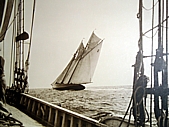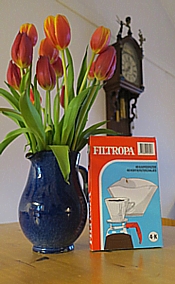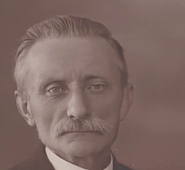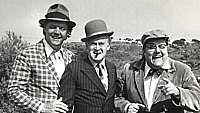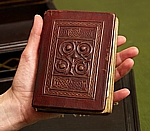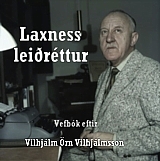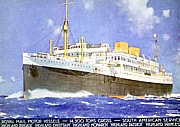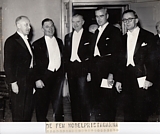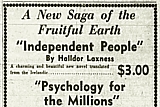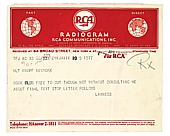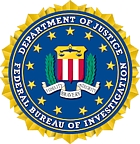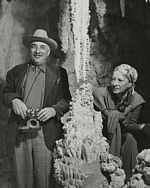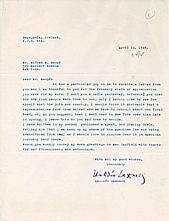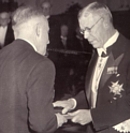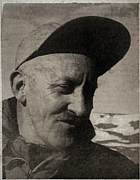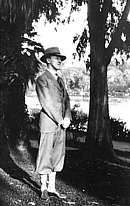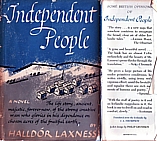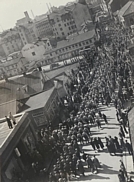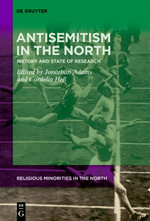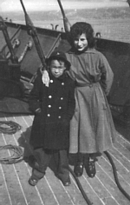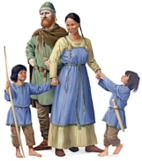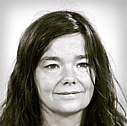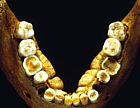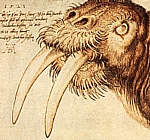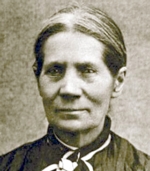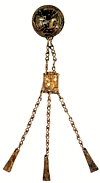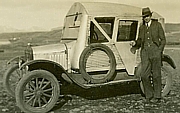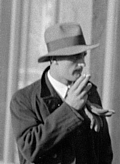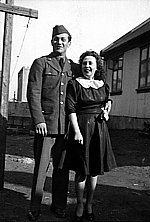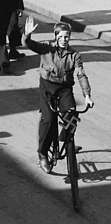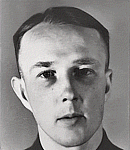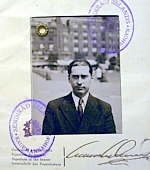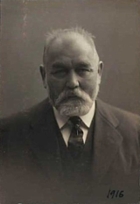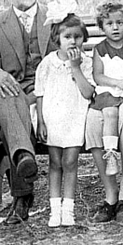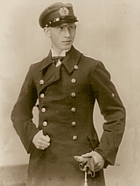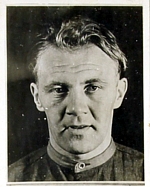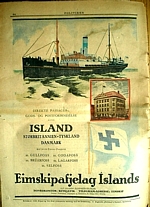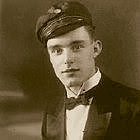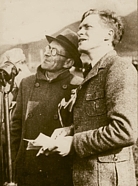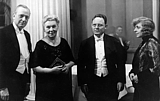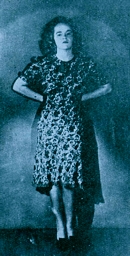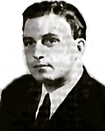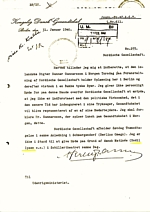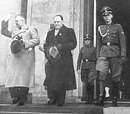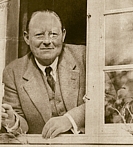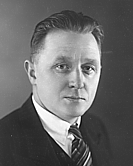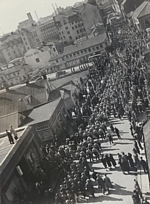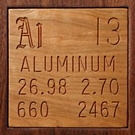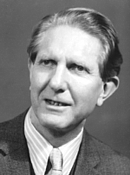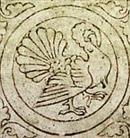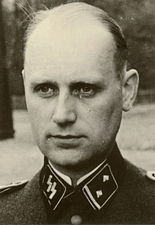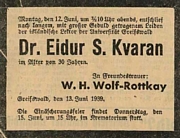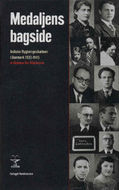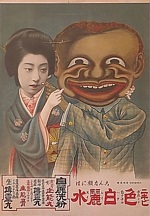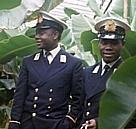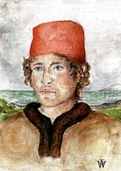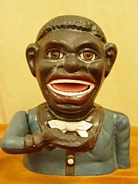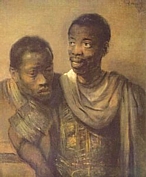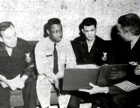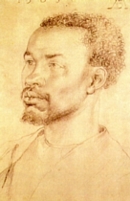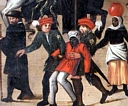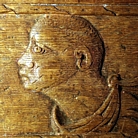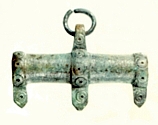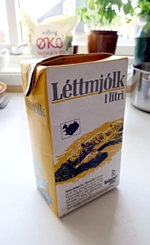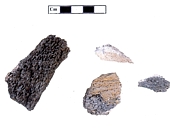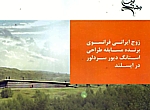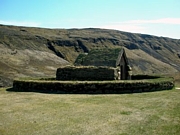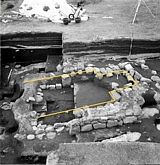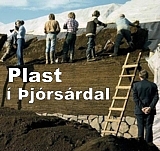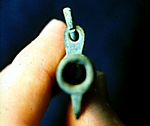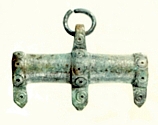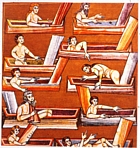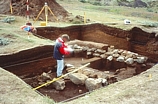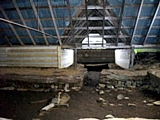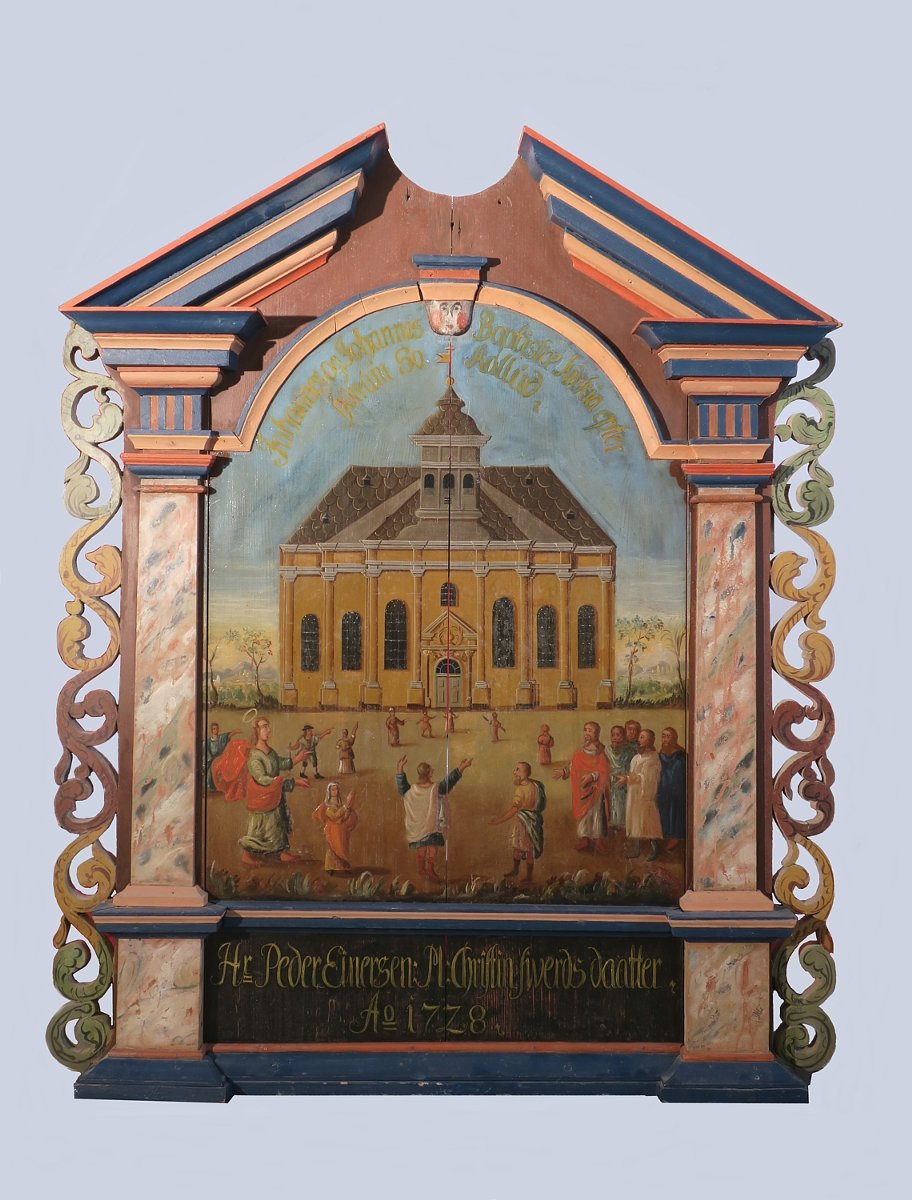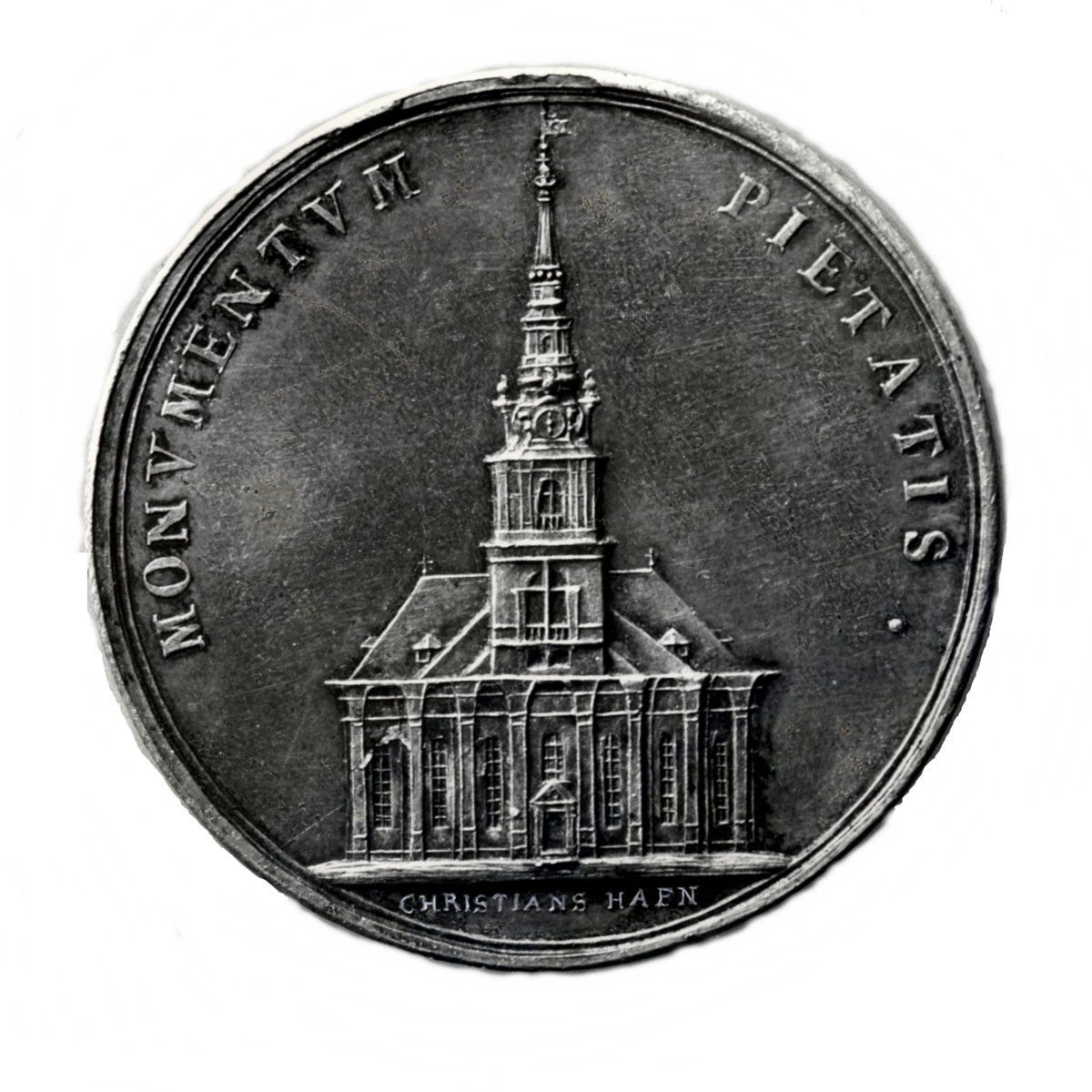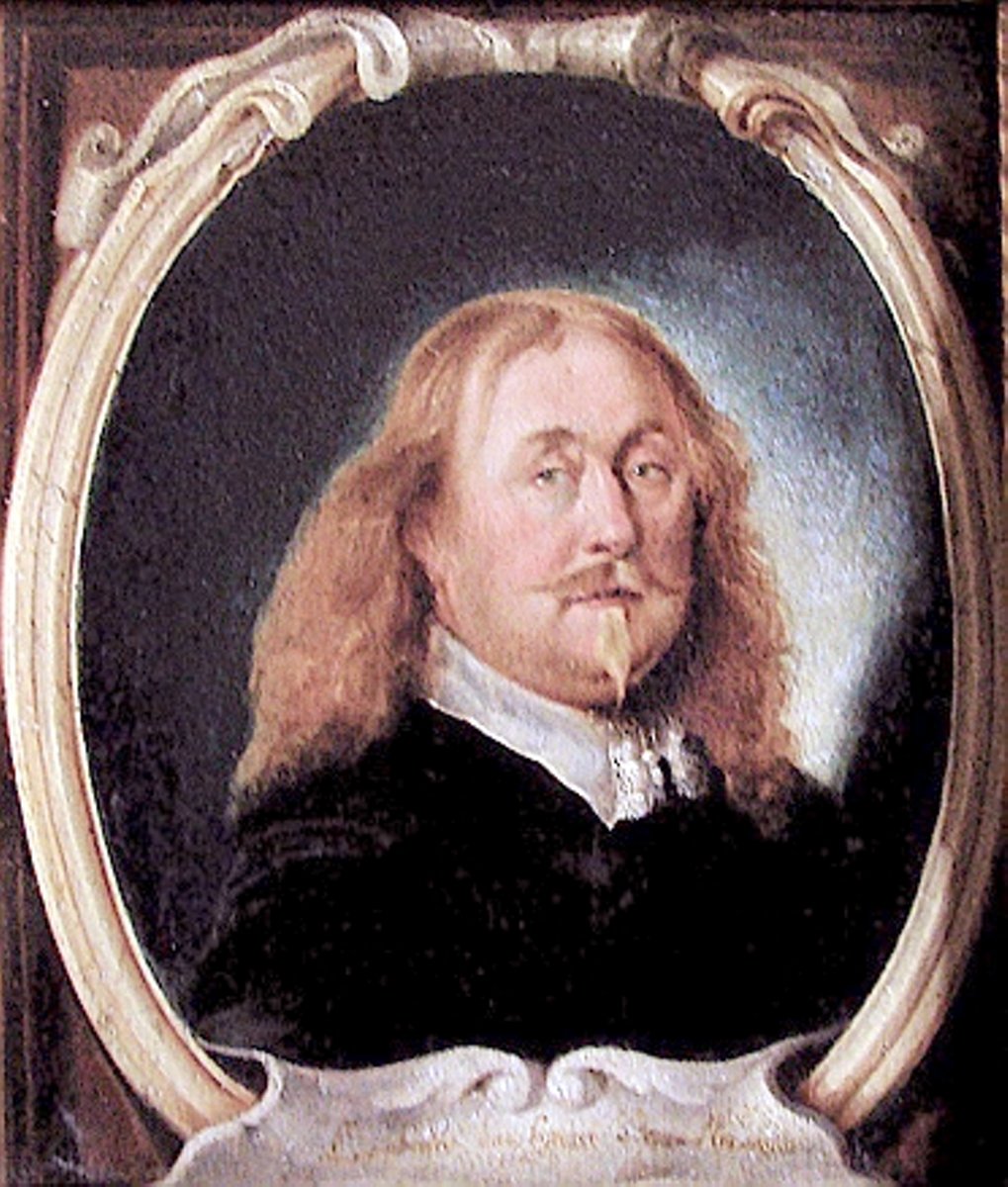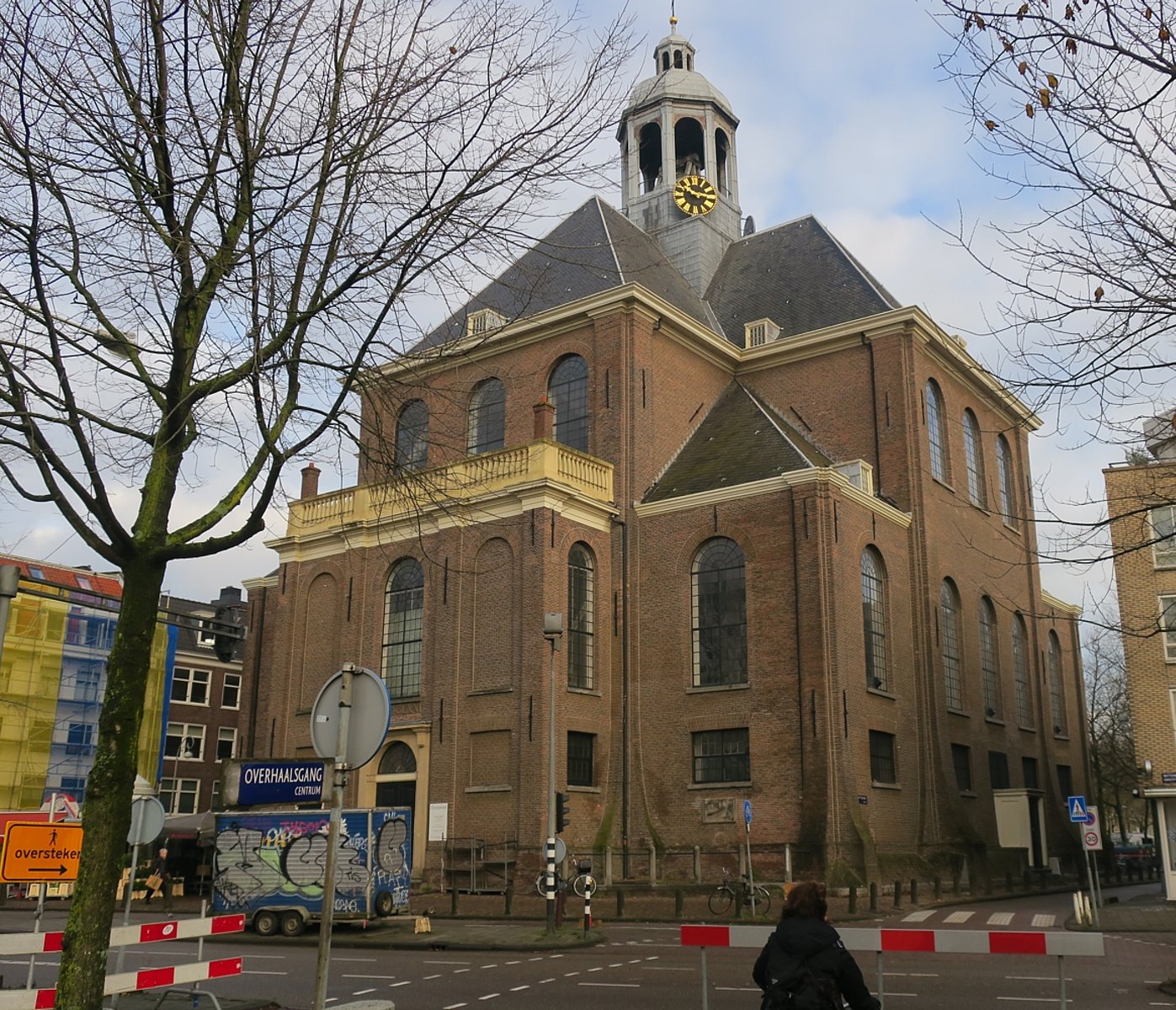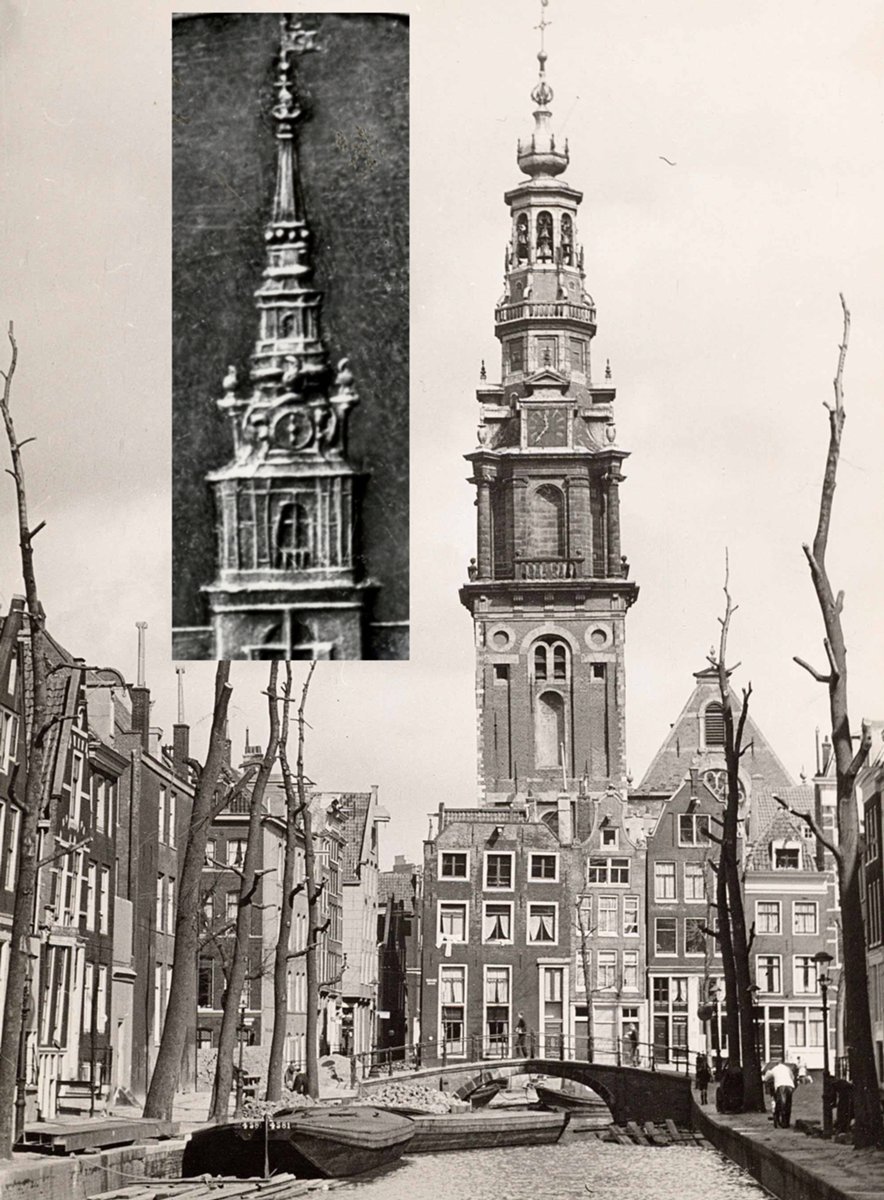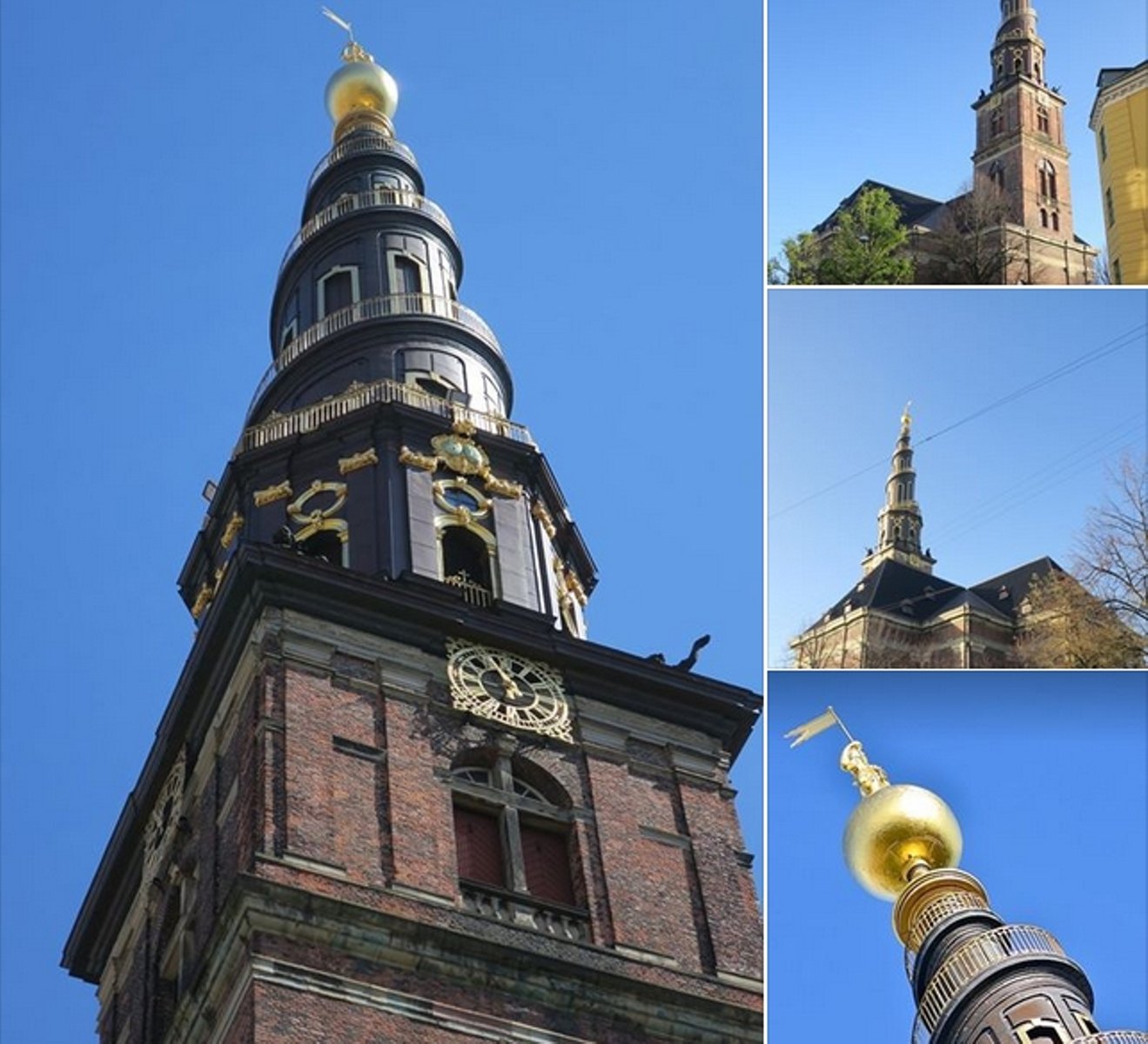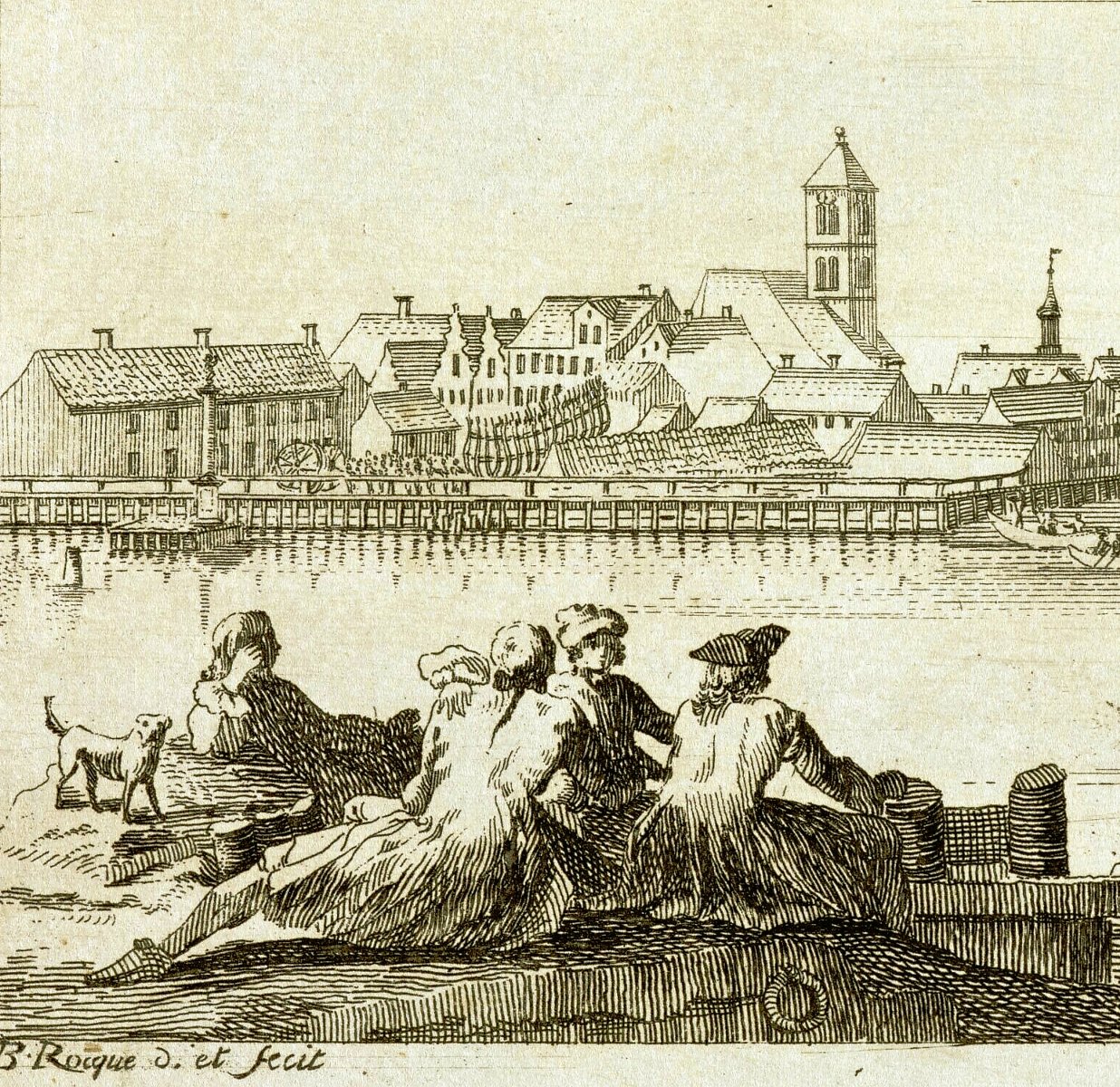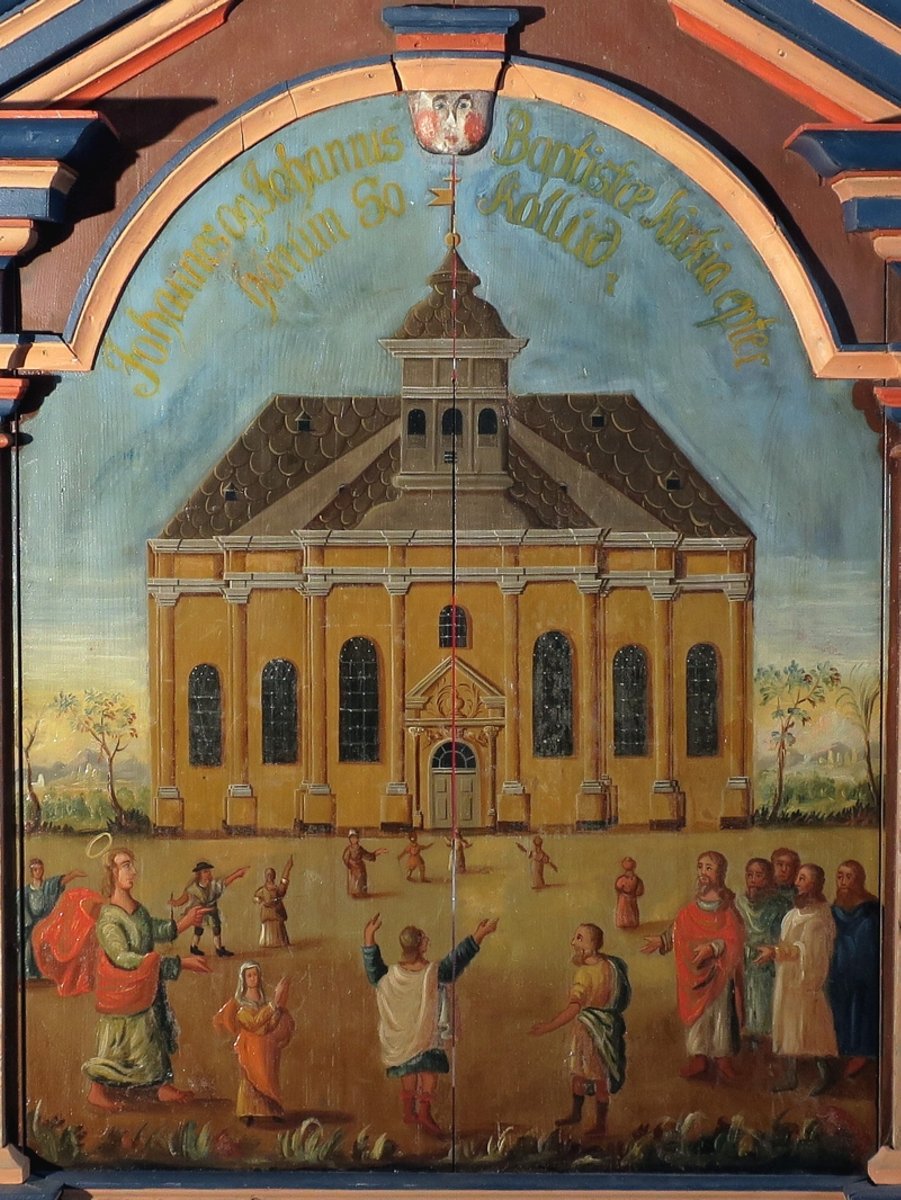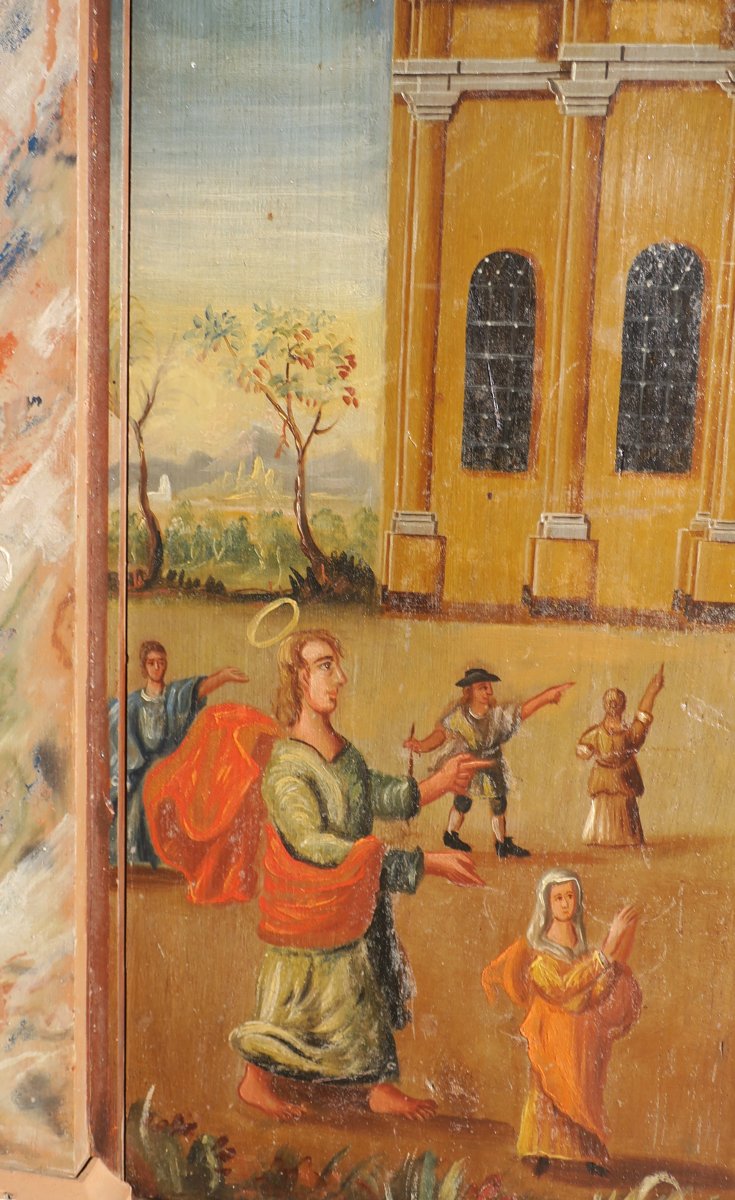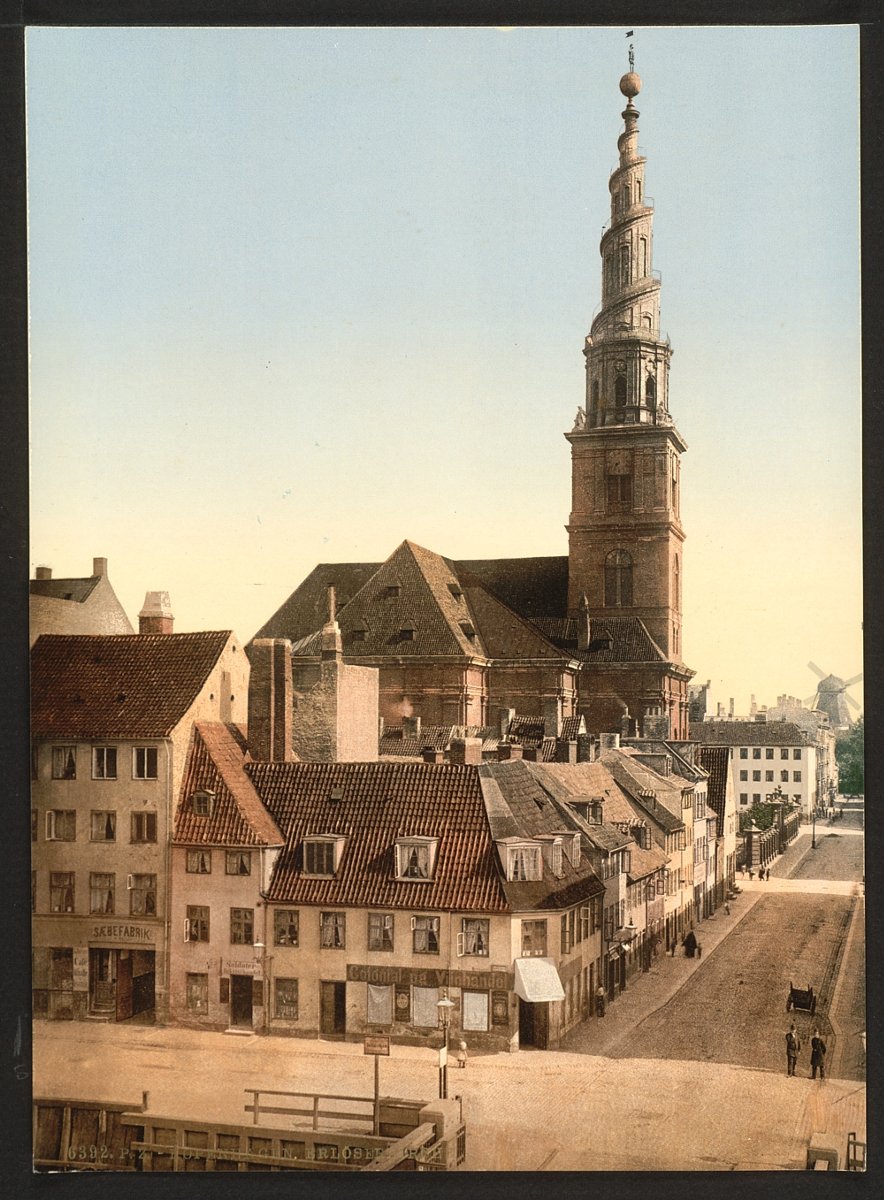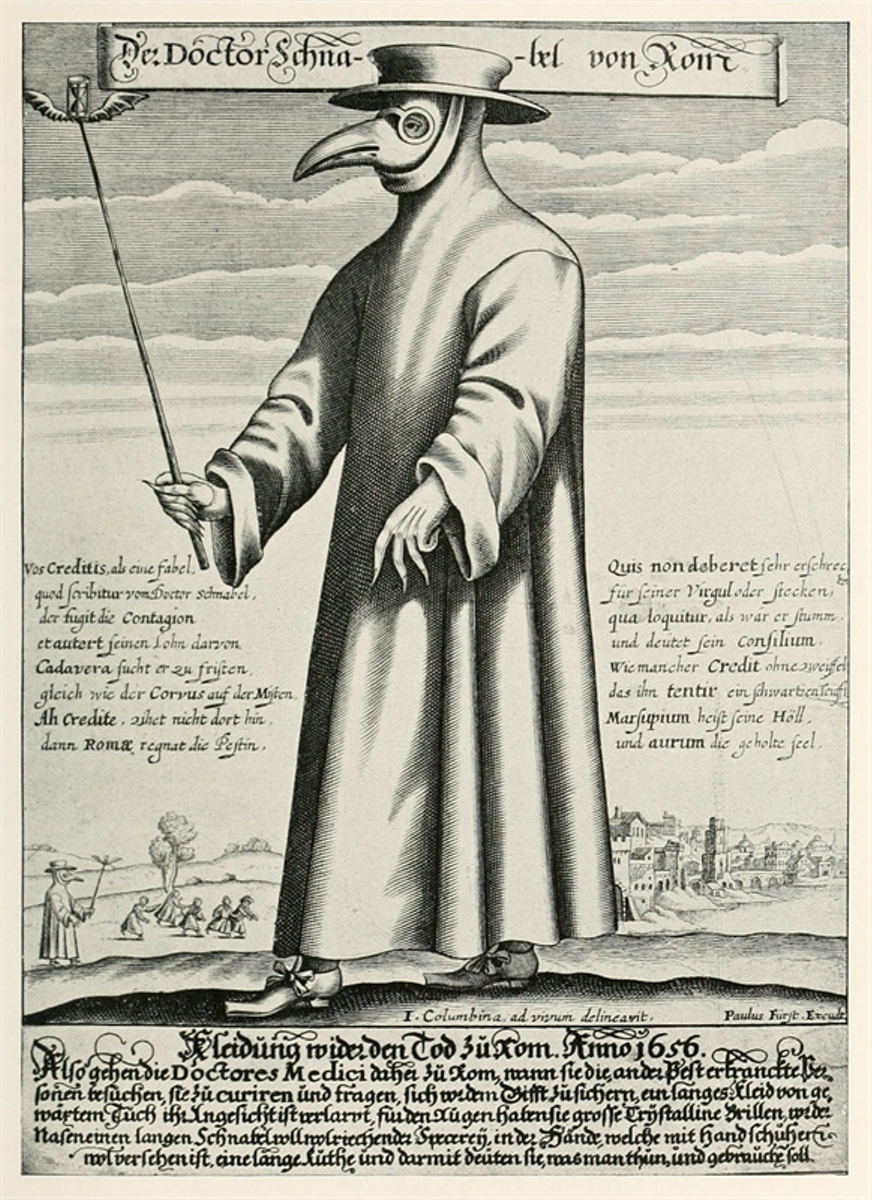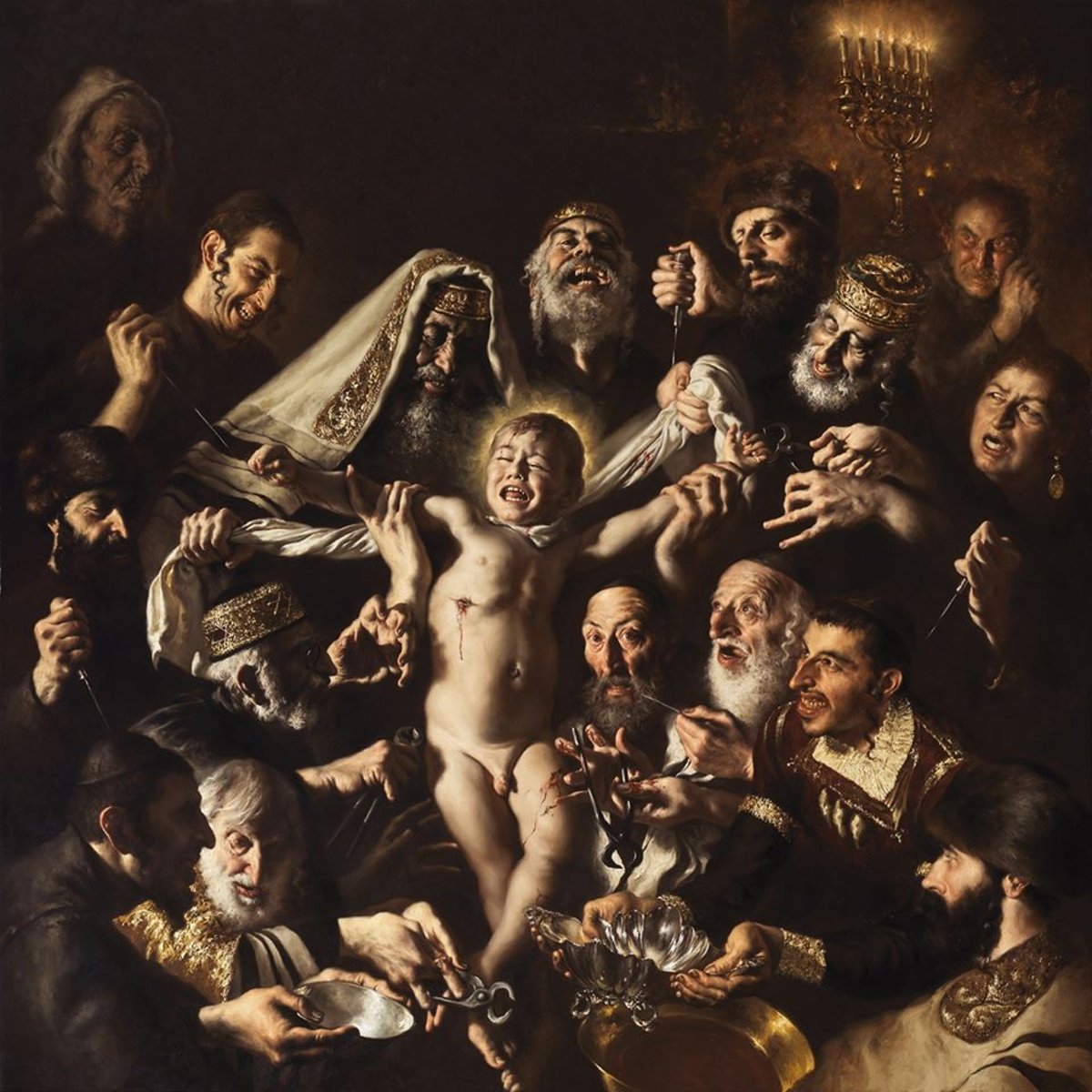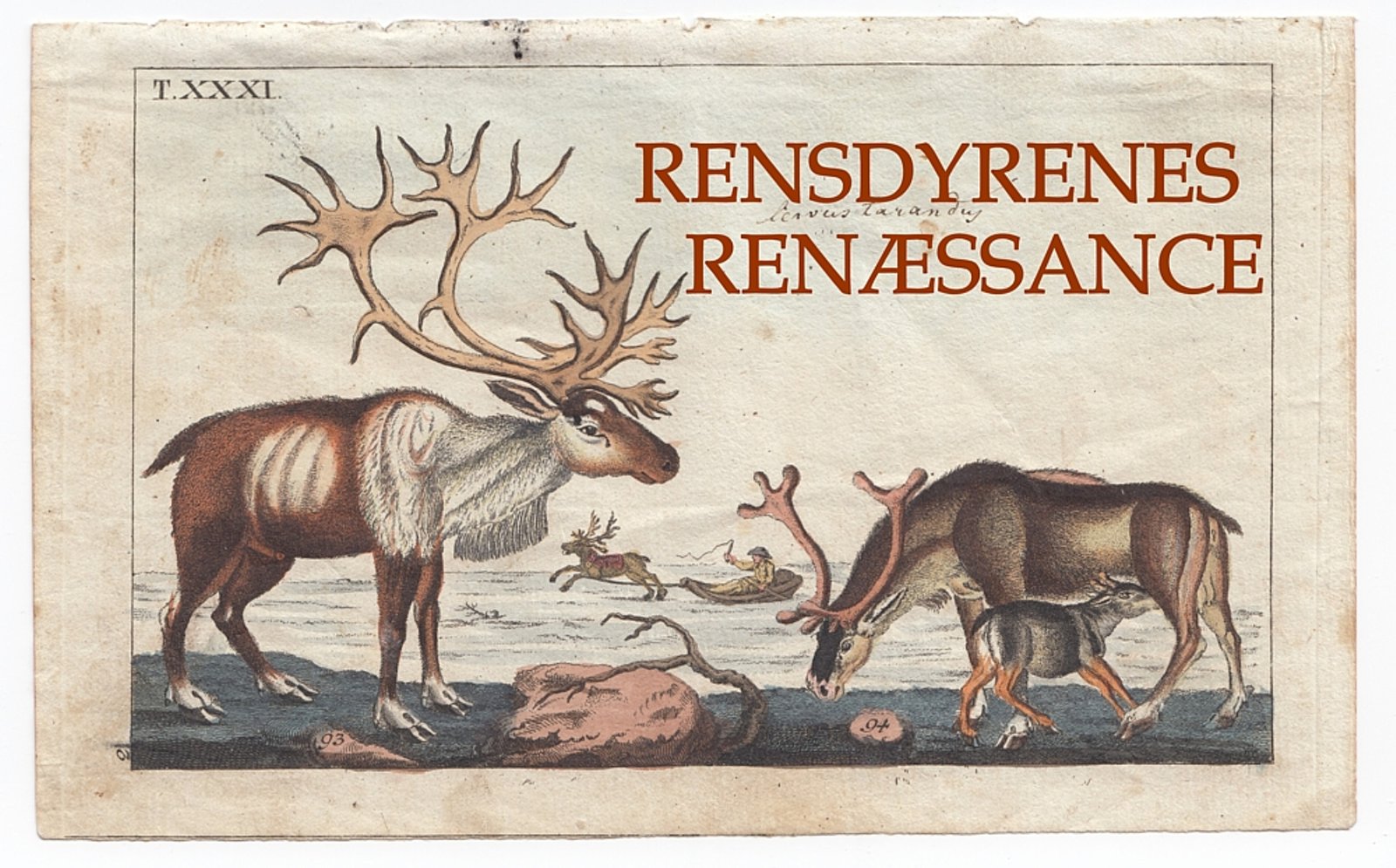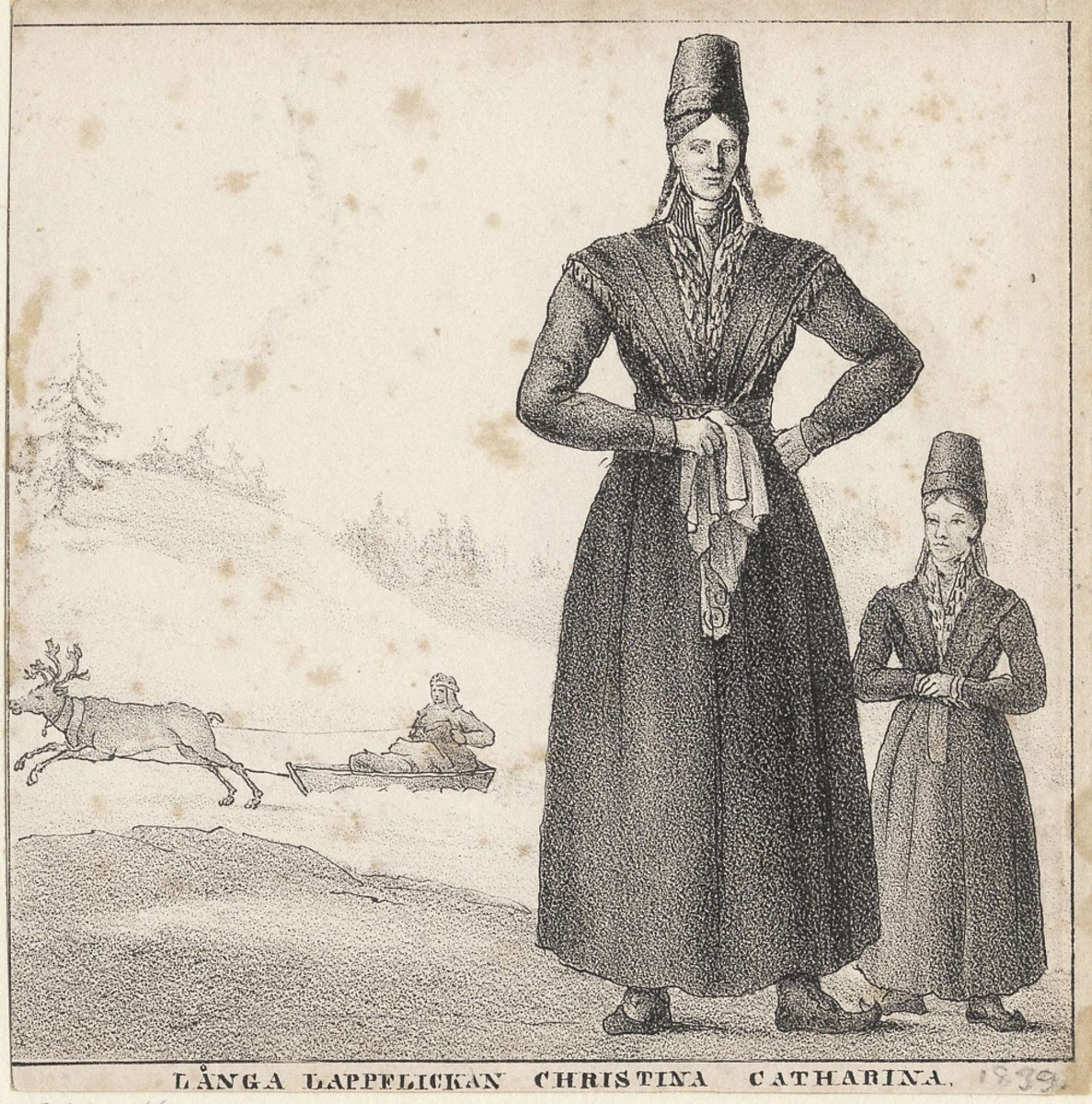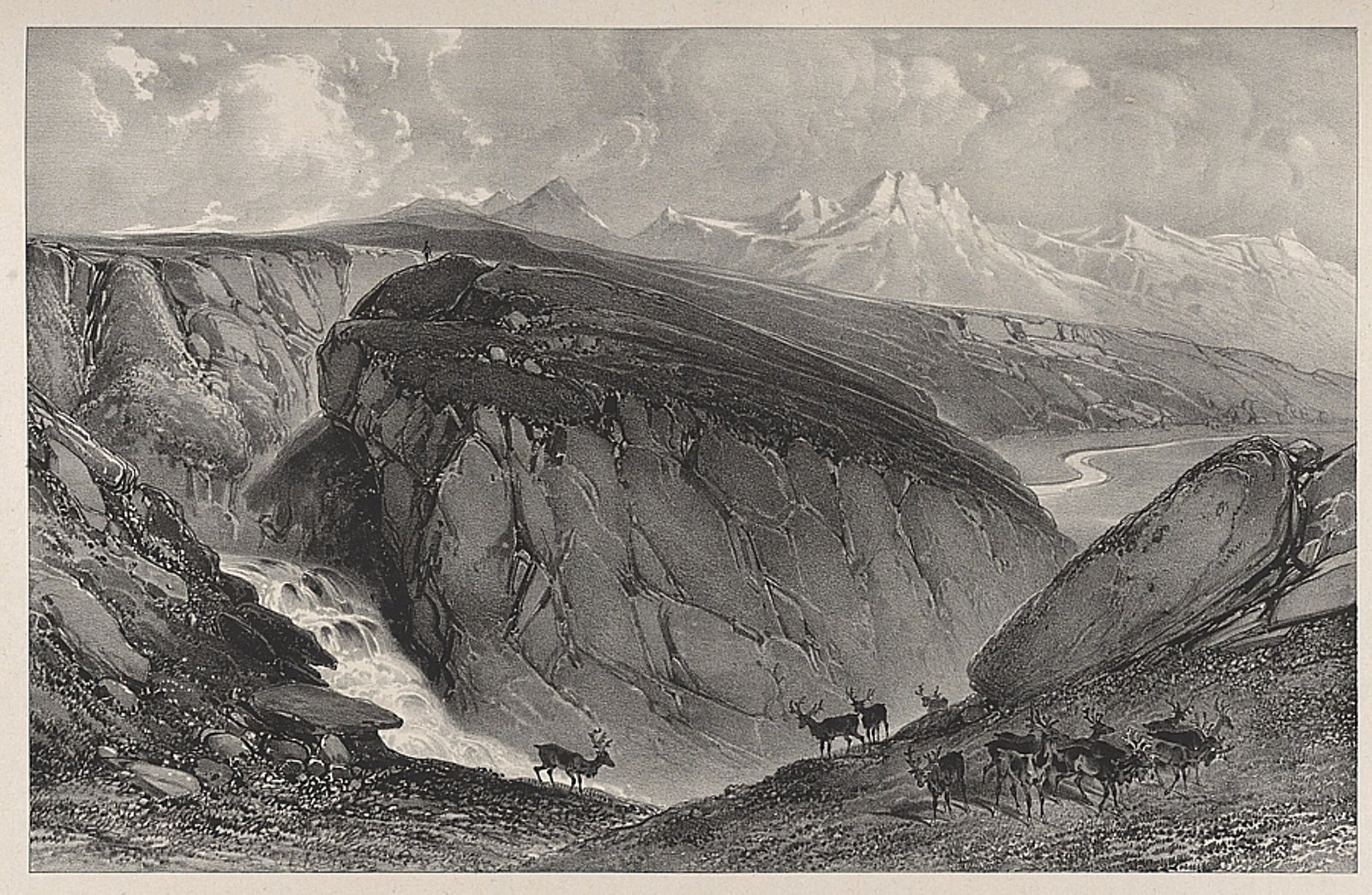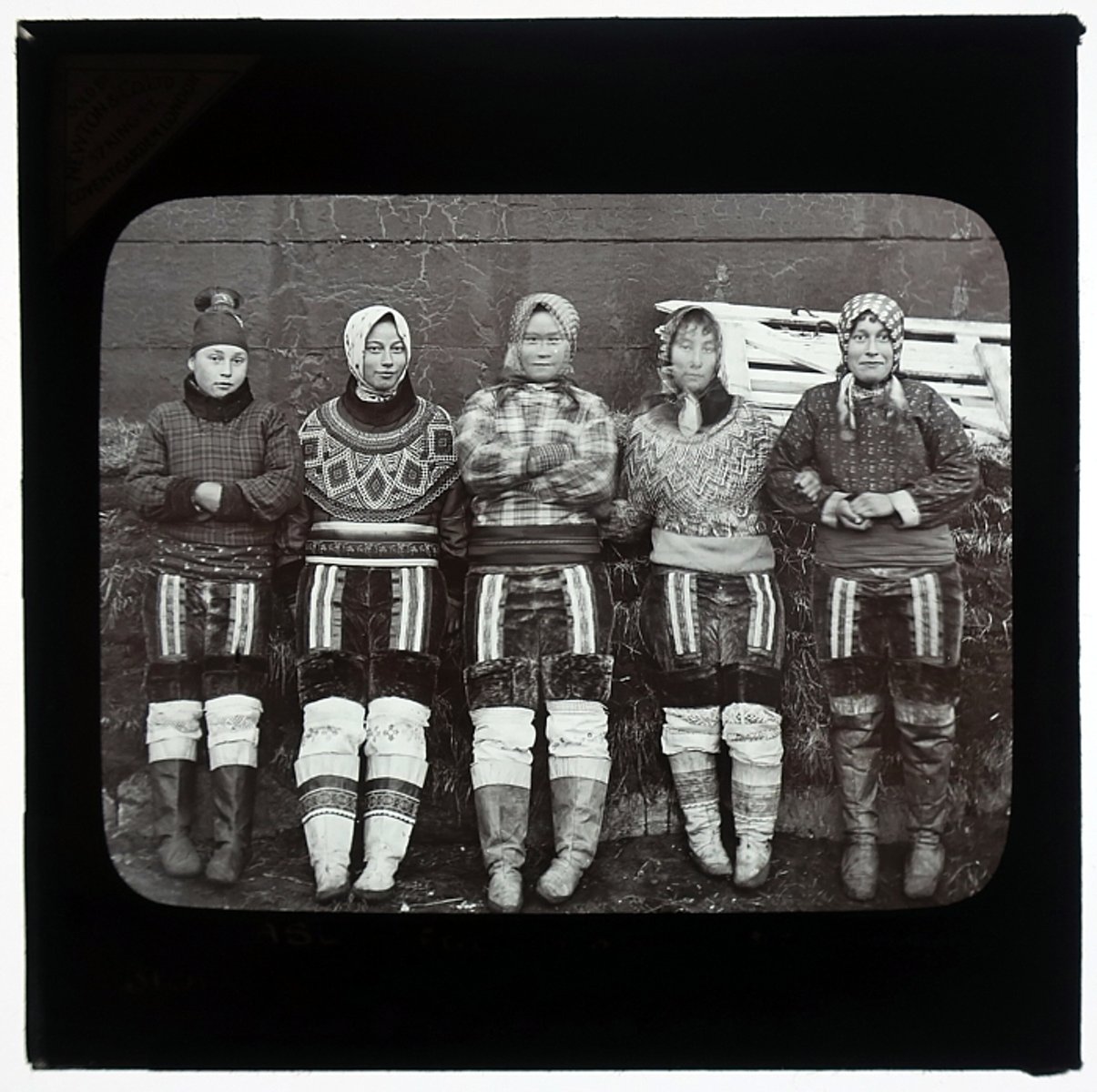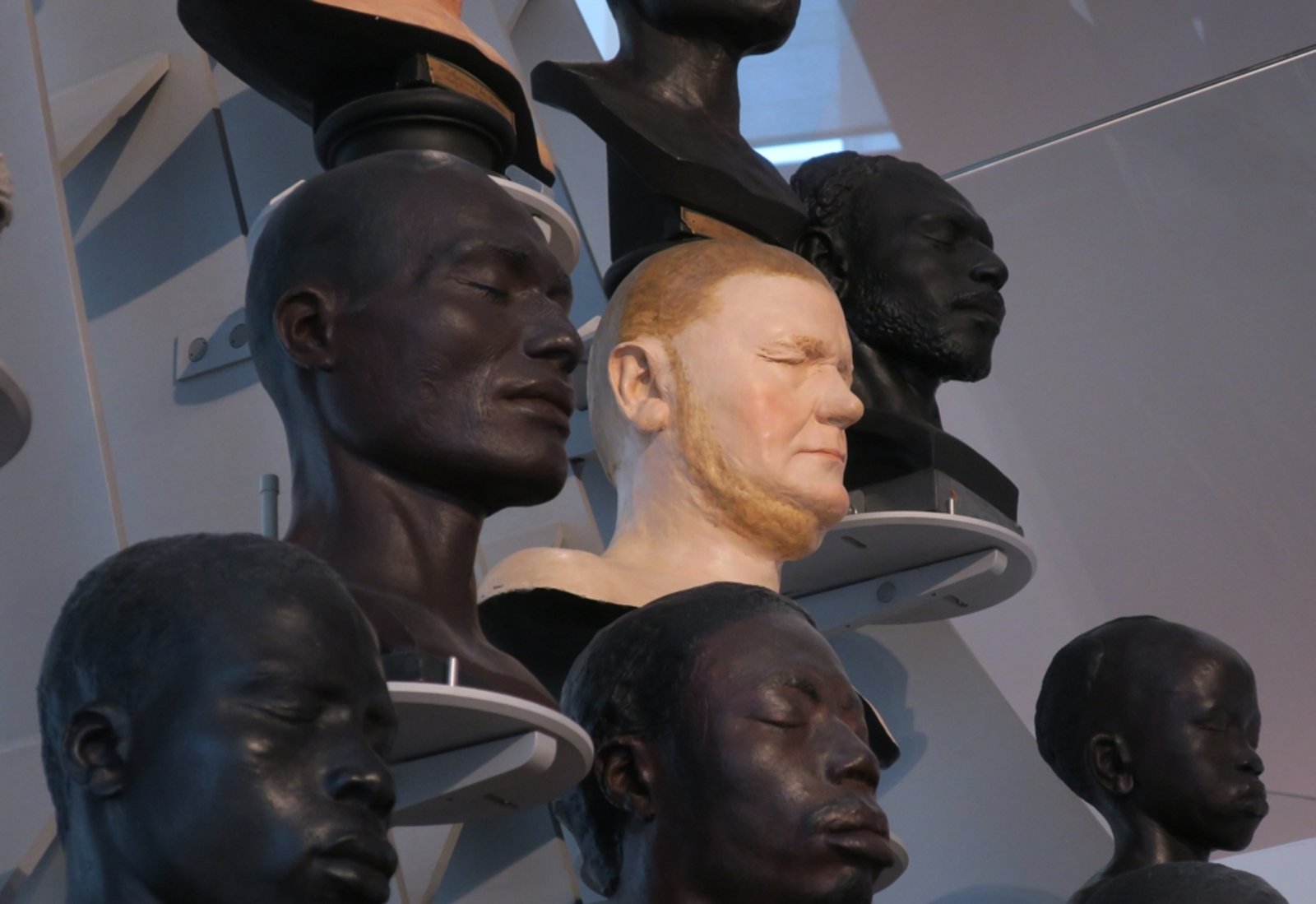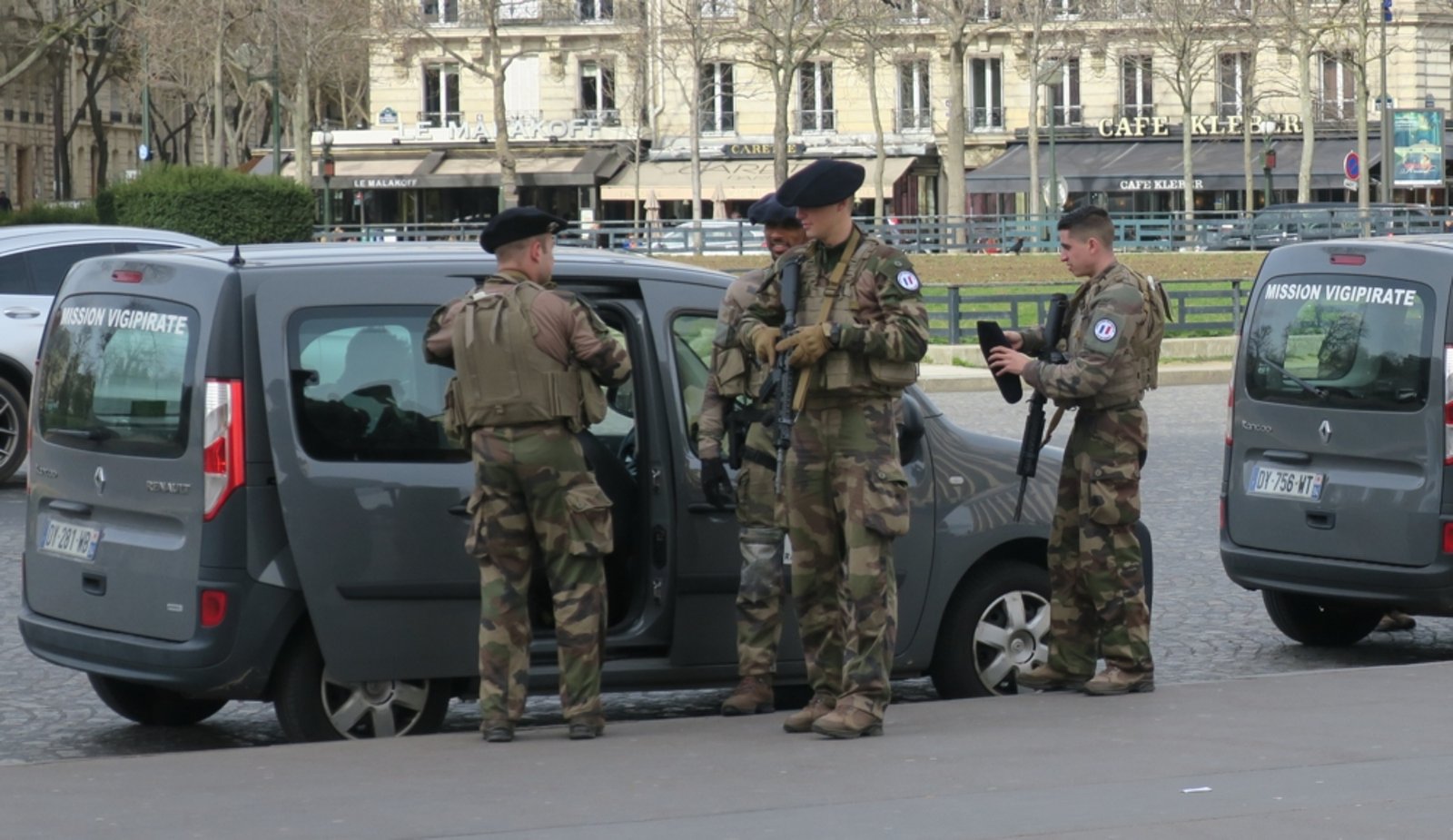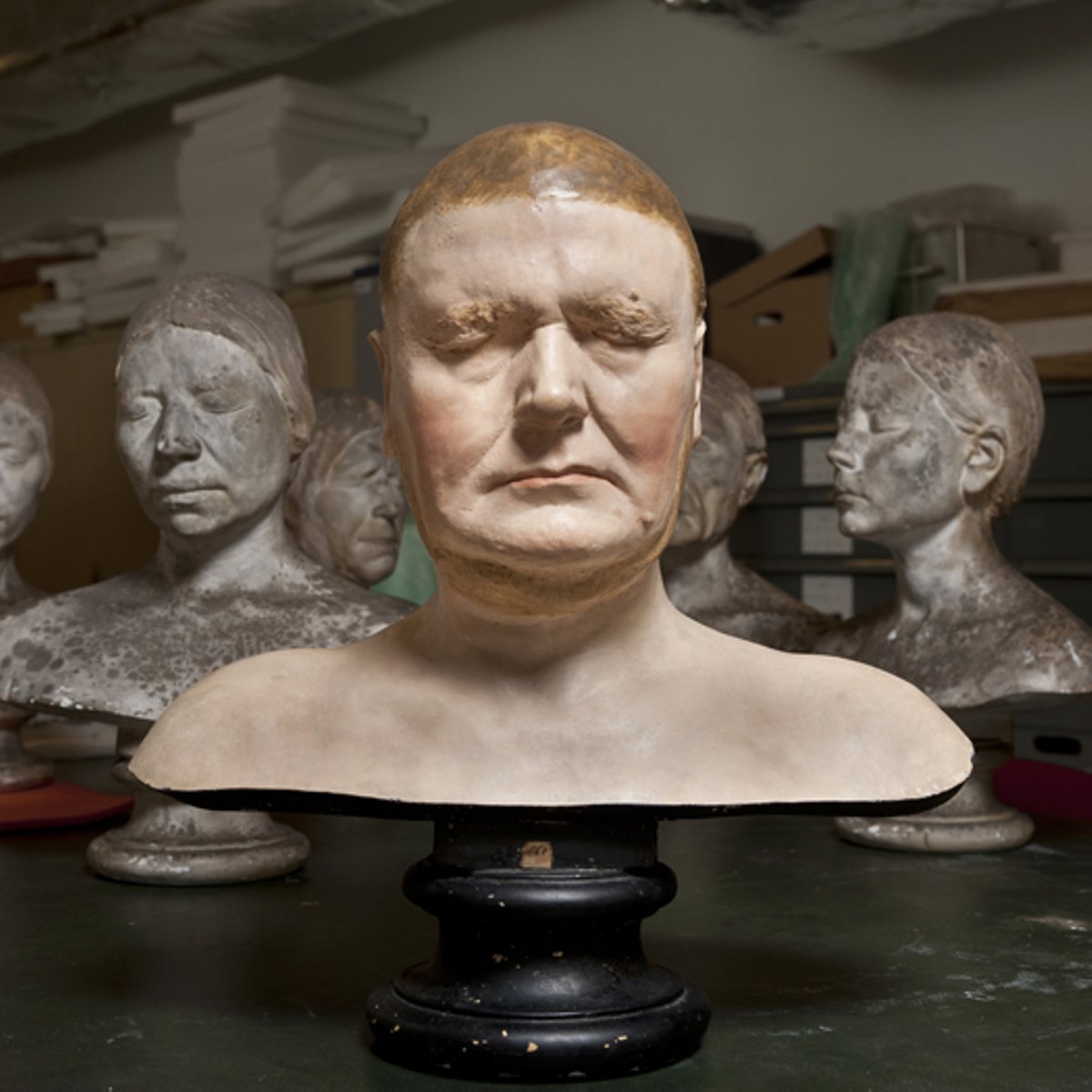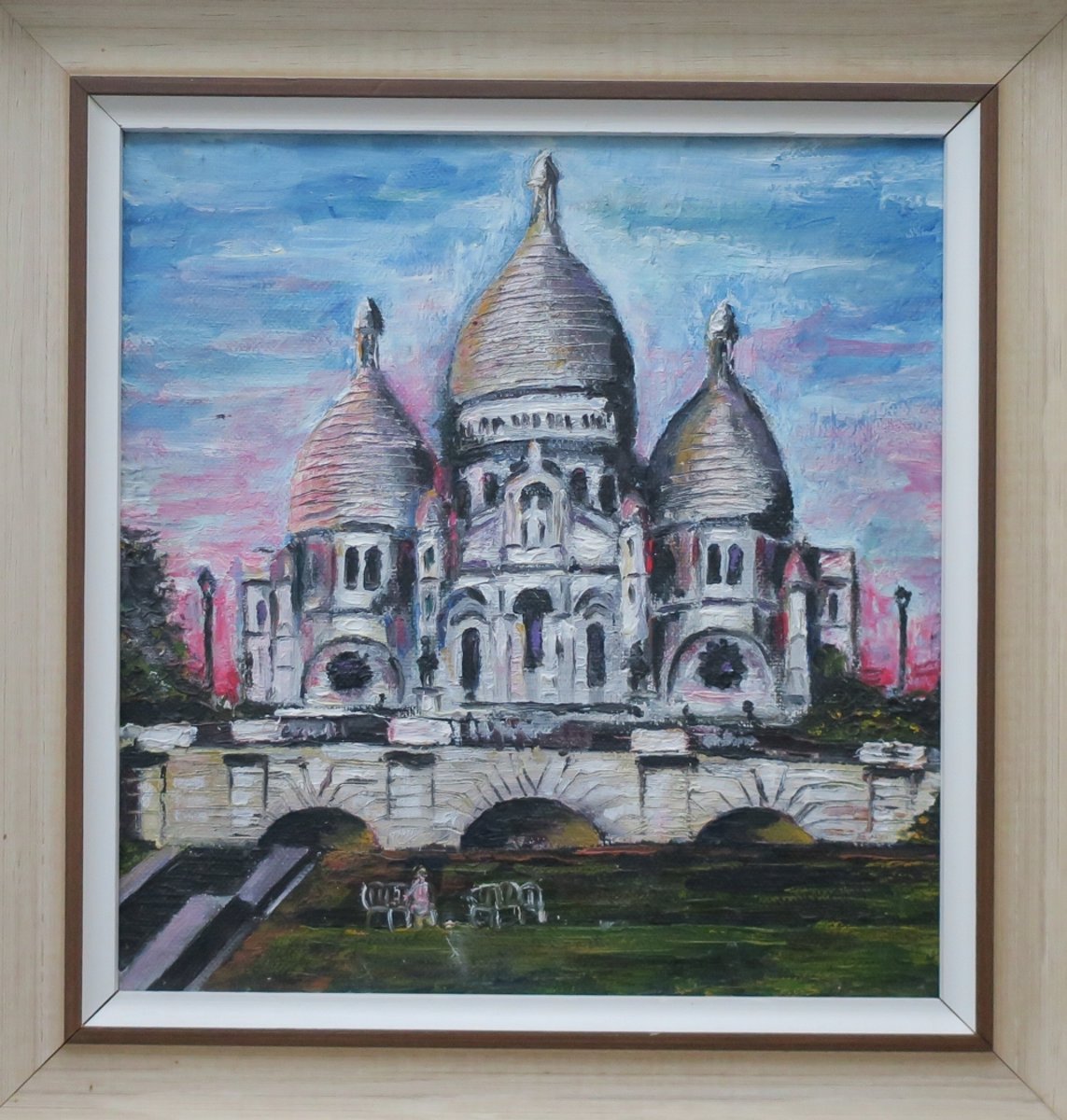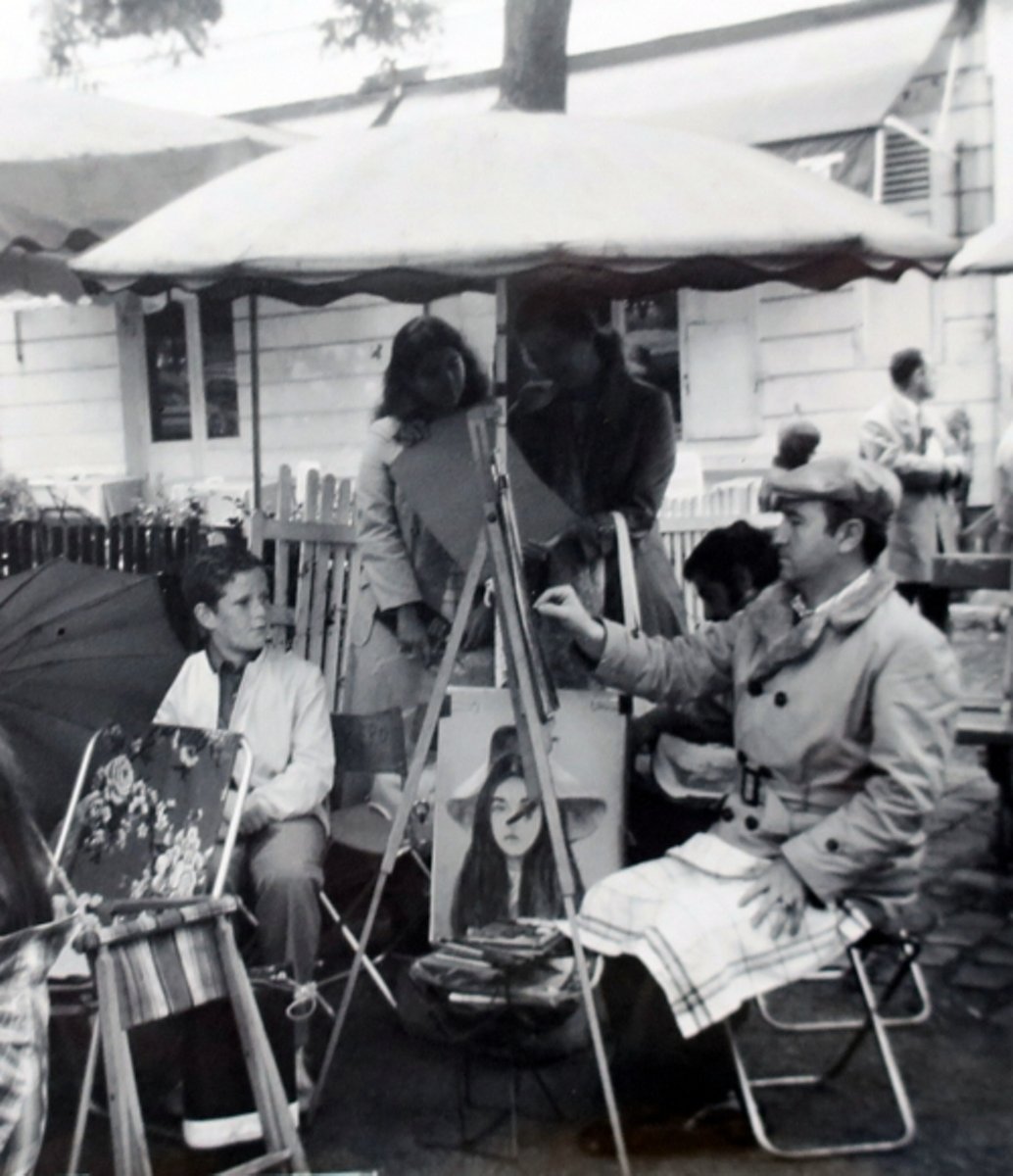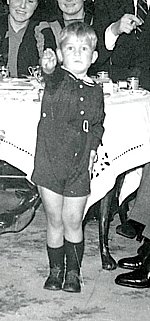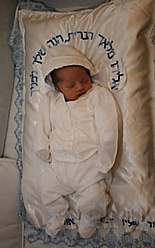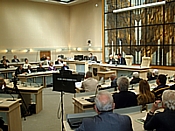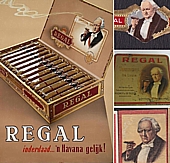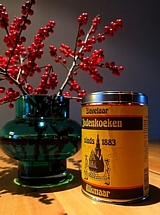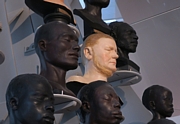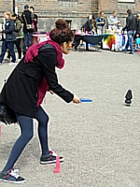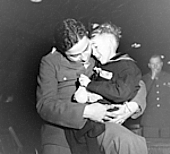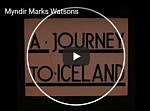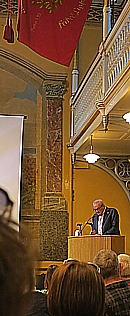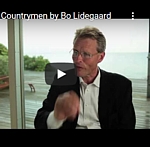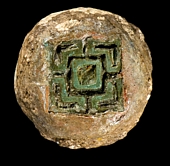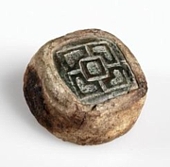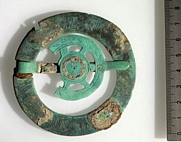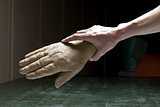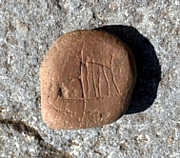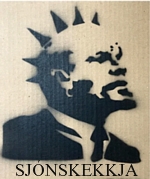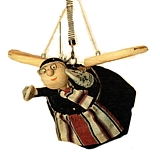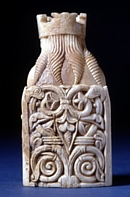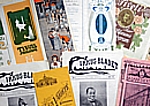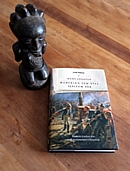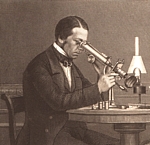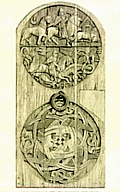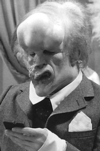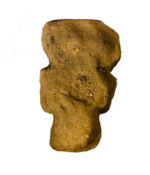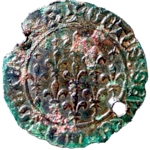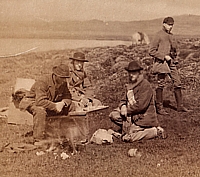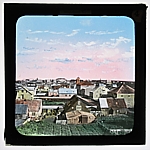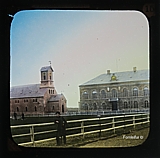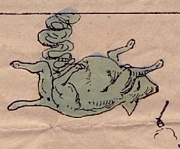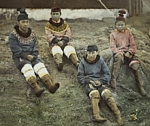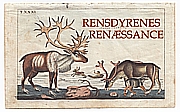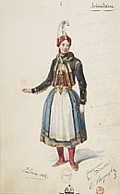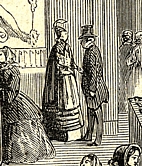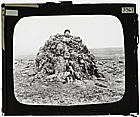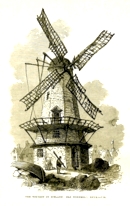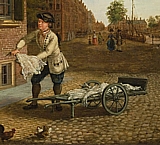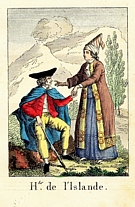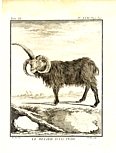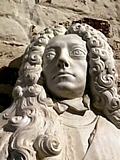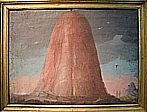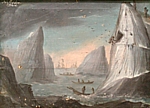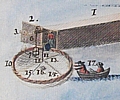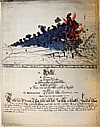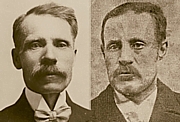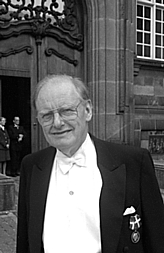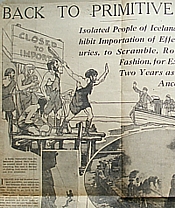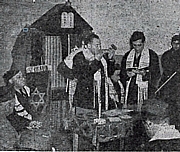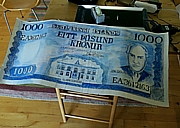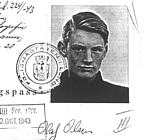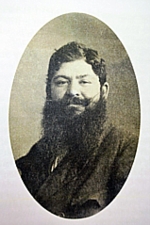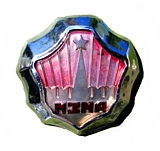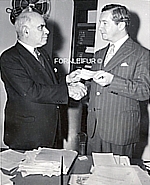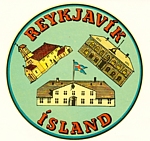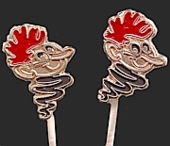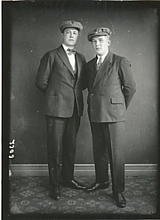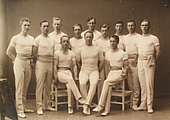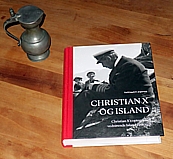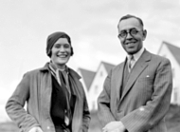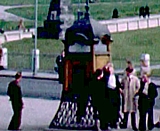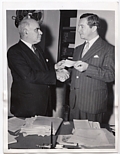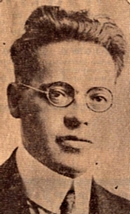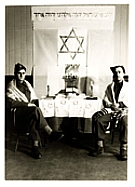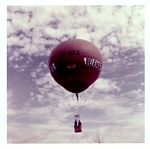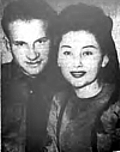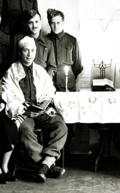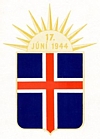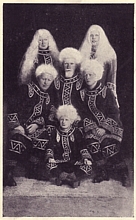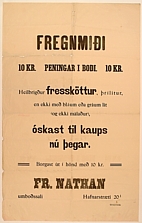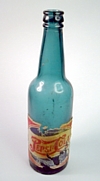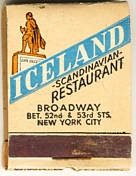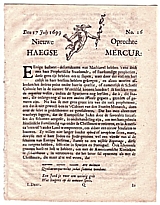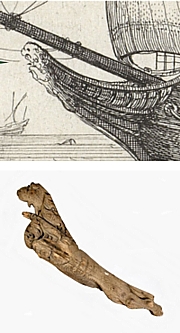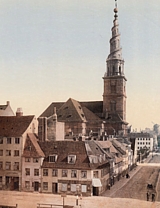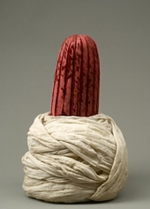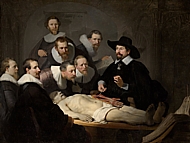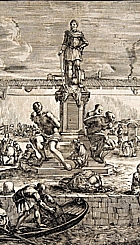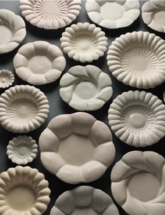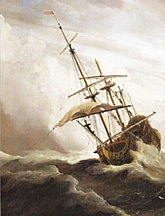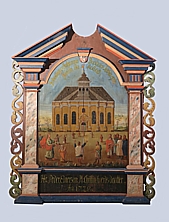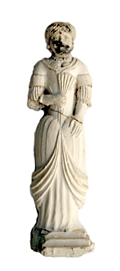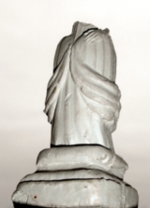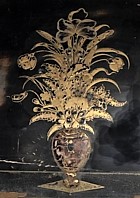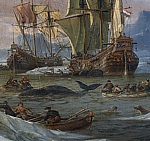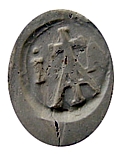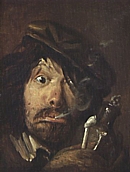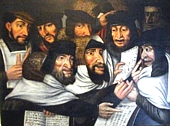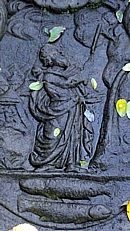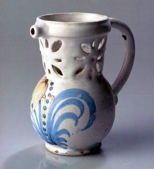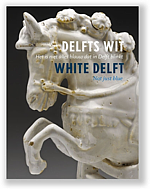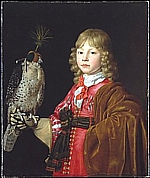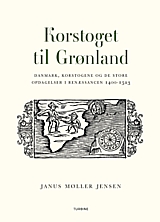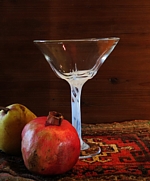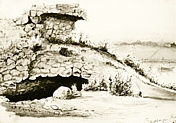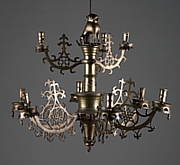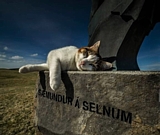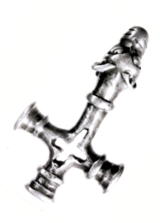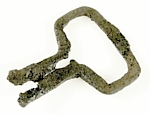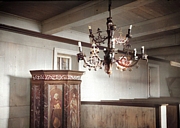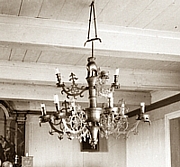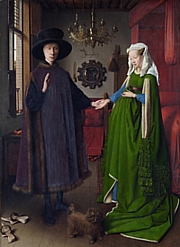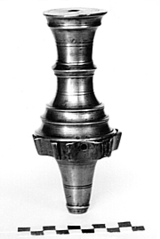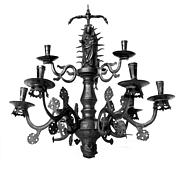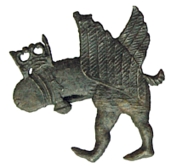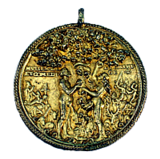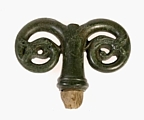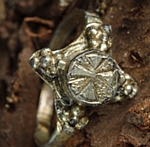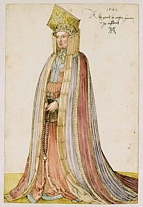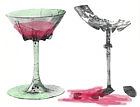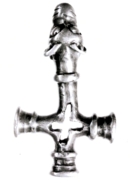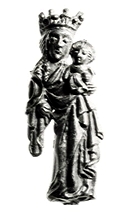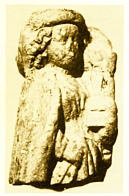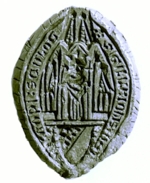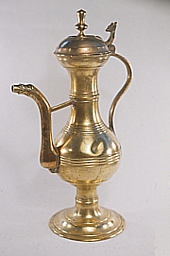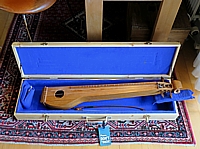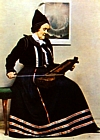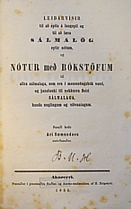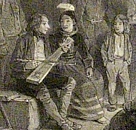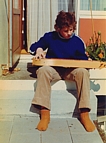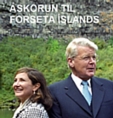Til hamingju međ daginn, Ţórhildur
16.4.2020 | 12:00
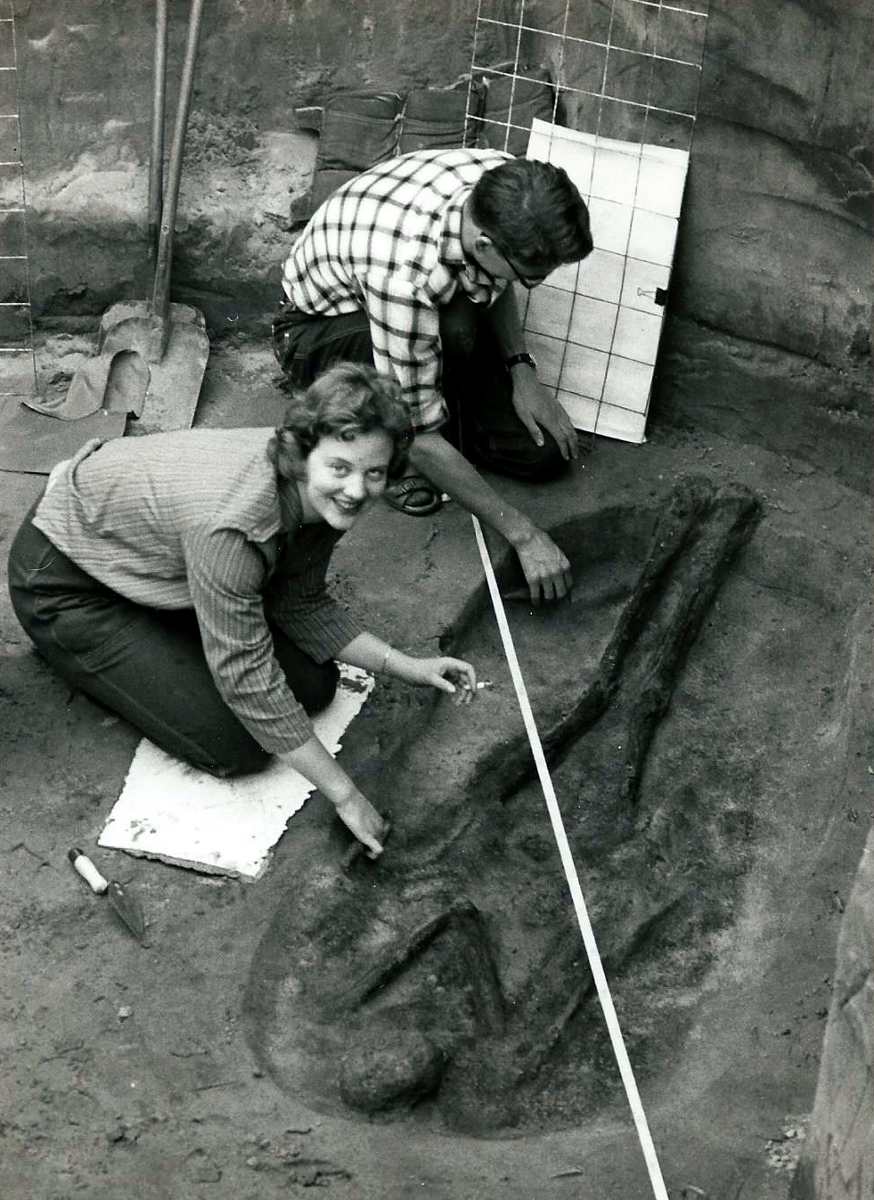 Hans hátign Fornleifur leyfir sér ađ óska ţjóđhöfđingjanum í Danmörku til hamingju á áttrćđisafmćlinu í dag.
Hans hátign Fornleifur leyfir sér ađ óska ţjóđhöfđingjanum í Danmörku til hamingju á áttrćđisafmćlinu í dag.
M. Ţórhildur Regina í Danmörku er eins konar kollega okkar fornleifafrćđinga, ţó hún sé ađeins međ pungapróf í greininni. Hún getur samt kallađ sig grafhund - alveg eins og flestir íslenskir fornleifafrćđingar - sem vitaskuld eru líka flestir hálfgerđar drottningar eđa algjörar.
Einhver spyr vafalaust, af hverju ég óskađi ekki Vigdísi til hamingju. Í ţví felst engin karlremba. Ég óska einfaldlega aldrei fyrrverandi og kosnum ţjóđhöfđingjum til hamingju. Ţeirra tími er liđinn. Ég sá ţó mér til ánćgju ađ feitir sjóđir á Íslandi, en fyrst og fremst í Danmörku, létu nokkur hundruđ milljóna í sjóđ í nafni Viggu og Ţórhildar, svo ađ ungt vísindafólk gćti litiđ nánar til loftslags og umhverfis. Peningarnir fara sem sagt einnig til rannsókna á nútímatrúarbrögđum. Af ţeim peningum mun fljótt veđrast mikill aur og áđur en menn og drottningar vita, verđa ţeir foknir út í veđur og vind. Ástćđulaust ađ óska nokkrum manni til hamingju međ ţađ.
Myndin efst var tekin ţegar Ţórhildur fékk sér reykpásu yfir víkingi á Borgundarhólmi er hún var yngri. Ţórhildur er ţví greinilega í áhćttuhópnum margumrćdda. Margrét tók ţátt í rannsókninni á Borgundarhólmi löngu áđur en Vigdís endurtók allt međ Geirharđi af Votey á RÚV ... forđum.
Bloggar | Breytt 1.2.2021 kl. 14:44 | Slóđ | Facebook | Athugasemdir (5)
DET FŘRSTE TĹRN ER FUNDET
13.4.2020 | 14:56
Foto V.Ö. Vilhjálmsson
Af Vilhjálmur Örn Vilhjálmsson
Hvis denne beretning skal begynde nogetsteds, er det pĺ trapperne uden pĺ Vor Frelsers Kirkes tĺrnspir, en sensommerdag i 1971. En far havde trukket sin 11-ĺrige sřn (forfatteren) med pĺ en tĺrnvandring pĺ Christianshavn. Det var pĺ denne mĺde at nćrvćrende forfatters sygelige angst for hřjder opstod.
Det var da ogsĺ en udfrielse fra disse tĺrnminder, da offeret for tĺrnvandringen for nogle ĺr siden opdagede, hvorledes det fřrste og indtil nu ukendte tĺrn og spir pĺ Vor Frelsers Kirke havde set ud. Det var intet i stil med arkitektens Lauritz de Thurahs myteomspundne spir, som man pĺbegyndte bygningen af i 1749. Det stod fćrdigt i 1752 og har siden da skrćmt livet af mange.
I 1967, nogle fĺ ĺr inden den skrćkkelige tĺrnbestigning, aflagde pastoren for den islandske folkekirkemenighed i Křbenhavn, Nationalmuseet et besřg. Han medbragte et sorthvidt fotografi, som han gav til samlingerne. Pĺ fotografiet kunne man se en lille altertavle som har hćngt i forskellige kirkebygninger i Miklaholt i Vestisland siden 1728. Dog bortset fra en periode i 1960´erne, da altertavlen blev konserveret. I den forbindelse bad konservatoren den islandske prćst i Křbenhavn om at tage fotografiet med til Křbenhavn for at se om eksperter kunne tilfřje oplysninger med hensyn til proveniensen eller en eventuel kunstner til tavlen. Man var dog klar over at motivet for alterbilledet var Vor Frelsers Kirke.
VOR FRELSERS KIRKE I 1728
Fotografiet blev sirligt limet pĺ et kort i 2. afdeling fotokartotek, hvor man tilfřjede disse beskedne oplysninger: »Altertavle i Miklaholti k., Island med fremstilling af Vor Frelsers k. malet ca 1690-96 af Hans Jřrgen Drost? «. Man legede ĺbenbart med tanken om at kunstneren som malede tavlen i Island kunne have vćret Hans Jřrgen Drost. Drost var en meget střrre kunstner end altertavlemaleren, og selvom han ganske vist var aktiv ved udsmykning af kirken, efter at den blev bygget, har han intet haft med tavlens tilblivelse at gřre. Tavlen blev derimod malet i 1728, sikkert af en amatřrmaler pĺ et lille vćrksted i Křbenhavn. Den lille altertavle blev sandsynligvis bestilt derfra og doneret af prćsten i Miklaholt, Pétur Einarsson (1694-1778) og hans hustru Kristín Sigurđardóttir, sĺdan som der oplyses i indskriften pĺ selve tavlen. Pastor Einarsson blev immatrikuleret ved Křbenhavns Universitet i 1720, hvor han studerede teologi. Muligvis havde han sćrlige minder fra Christianshavn eller Vor Frelsers Kirke, og har derfor bestilt en scene derfra til tavlen hjemme i sin lille kirke og sogn i Miklaholt.
Da Danmarks Kirkers bind om Vor Frelsers kirke udkom i 1965, havde dets forfatter, kunsthistorikeren Jens Steensberg, kendskab til et tidligere spir, men ikke den ringeste anelse om, hvorledes det nřjagtigt havde set ud. Desvćrre indgik fotografiet af altertavlen i Island for sent i Nationalmuseets registranter til at kunne bidrage til Danmarks Kirkers bind om Vor Frelsers kirke. Originaltegninger af kirken, bortset fra grundplanen, er ikke bevarede.
En sřlvmedalje fra 1682, prćget ved lćgningen af Vor Frelsers hjřrnesten, viser van Havens tĺrnplaner. Kgl. Mřnt og Medaljesamling, Nationalmuseet. Foto Nationalmuseet.
VAN HAVENS TĹRN
Pĺ en sřlvmedalje, som blev prćget i anledningen af lćgningen af kirkens hjřrnesten i 1682, kan man derimod tydeligt se hvilket tĺrn van Haven havde tćnkt sig. Christian d. 5. var i hvert fald henrykt over projektet og skrev pĺ den eneste bevarede grundtegning: »Vi er allernĺdigst tilfreds, at Christianshavns kirke efter denne afridsning vorder bygt. Skrevet pĺ vort slot Kiřbenhavn d. 19 oktober. Anno 1682«.
Vor Frelseres Kirkes bygmester var den hollandsk-norske Lambert van Haven (1630-96), som blev fřdt i Bergen. Van Haven dřde desvćrre ĺret fřr kirken stod fćrdig. Bygningen af hans planlagte etagespir trak ud efter kirkens og dens massive tĺrnflřjs fuldfřrelse. Dels blev bygningen meget dyrere end planlagt, men der opstod ogsĺ store problemer med vindueskonstruktionerne og fundamentet til bygningen. Van Havens bevarede tegninger af nogle tĺrne og spir som han udfćrdigede under et besřg i Holland, viser ikke den lille »tĺrnhćtte«, som ses pĺ altertavlen i Island, og som fřrst kom til sidde pĺ kirketĺrnet efter van Havens dřd.
Lambert van Haven. Maleri er antageligt malet af Michael van Haven. Det Nationalhistoriske Museum, Frederiksborgs slot: A765.
Man har leget med tanken, om at disse tegninger, som nu bevares pĺ Statens Museum for Kunst, var udfćrdiget som skitser til et tĺrn pĺ Vor Frelsers Kirke. Senere forskning har derimod med tydelighed vist, at de tĺrne og spir som van Haven tegnede i Holland blandt andet var studier til en planlagt ombygning af Christiansborg.
Altertavlen i Miklaholt i Island har nu med al sandsynlighed givet os svaret pĺ denne ulřste gĺde i Vor Frelsers Kirkes bygningshistorie.
DEN HOLLANDSKE FORBINDELSE
Der kan ikke herske nogen tvivl om, hvorfra van Haven hentede sin inspiration til byggeriget af Vor Frelsers Kirke. Han gik pĺ idé-jagt i sit fćdrenes land, Holland. Det er retteligt pĺpeget, at kirken er opfřrt i den italiensk-prćgede men spartanske, hollandske barok-stil.
Danmarks Kirkes redaktřr nřjedes med at henvise til Nieuwe Kerk (Nykirke) i den Haag som en mulig inspiration til Vor Frelsers Kirke pĺ Christianshavn. Men en langt mere sandsynlig inspiration til Vor Frelsers Kirke finder vi dog i Oosterkerk i Amsterdam, som blev bygget i ĺrene 1669-1671. Oosterkerk ved Wittenburgergracht byggedes lige ud til Amsterdams befćrdede havnekvarter fra 1600-tallet, hvorfra flere af Christianshavns křbmćnd hentede mange af deres vigtigste varer. Kirken var ogsĺ kun godt 200 meter fra det hollandske admiralitets hovedsćde, som i dag huser Hollands sřfartsmuseum, Schepsvaardsmuseum. Admiralitetet var af og til engageret i udlĺn af skibe, materiel og mćnd til danske krige mod svensken (se Skalk 2014:6) mens den dansk konge betalte for hjćlpen med handels- og hvalfangerprivilegier ved udposterne af riget, for eksempel ved Island.
Oosterkerk i Amsterdam i efterĺret 2017. Den var for von Haven en oplagt inspirationskilde til Vor Frelsers Kirke. Foto V. Ö. Vilhjálmsson. 2017.
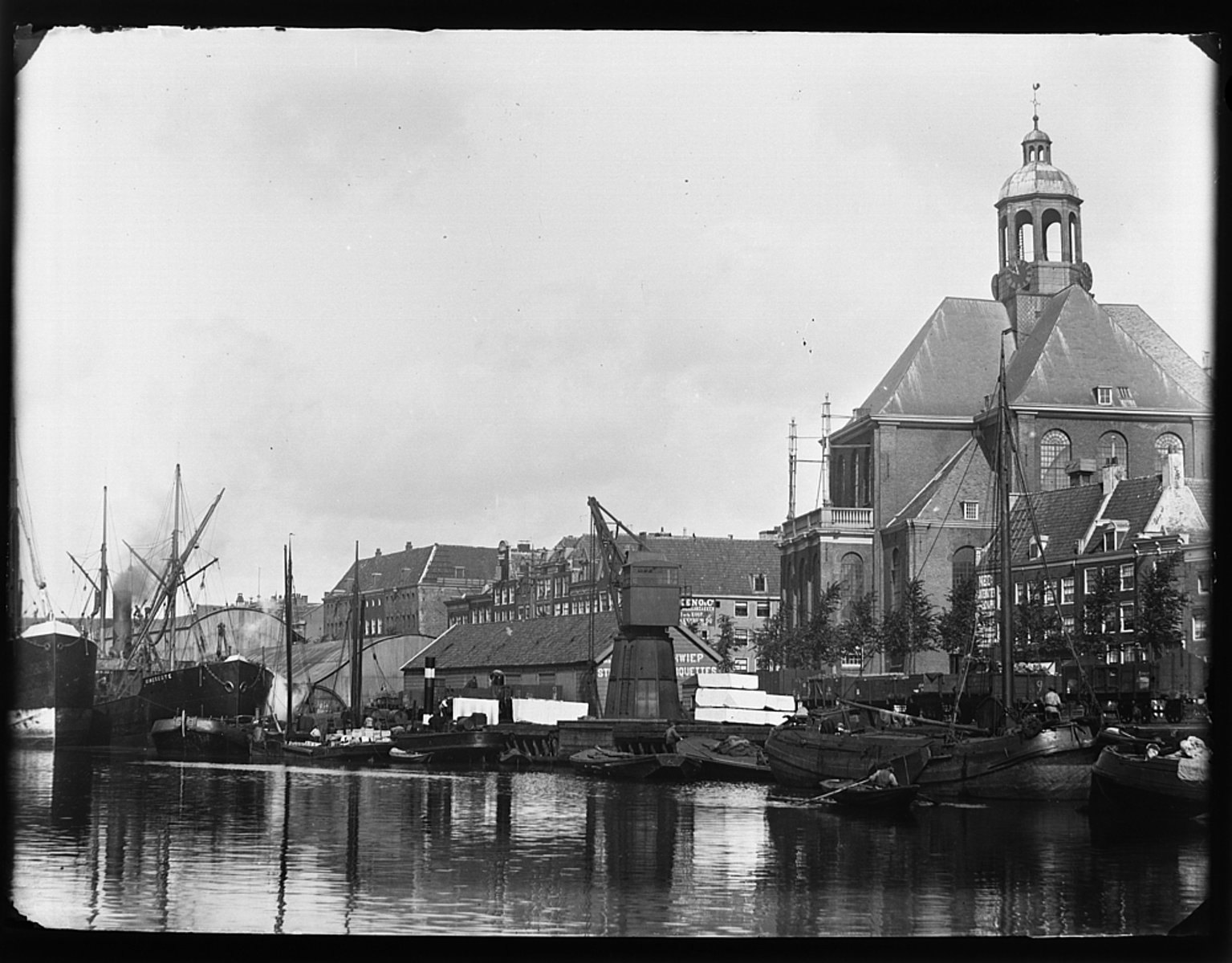 Oosterkerk ved Amsterdams havn i begyndelsen af det 20. ĺrhundrede. Foto Amsterdam Stadsarchief.
Oosterkerk ved Amsterdams havn i begyndelsen af det 20. ĺrhundrede. Foto Amsterdam Stadsarchief.
Den vigtigste inspirationskilde for Christianshavn var pĺ mange mĺder den nordhollandske storby Amsterdam, men ikke Sydhollands regeringsby, hvis bureaukrati blandt embedsfolk i regeringen, Generalstaten i den Haag, snarere skabte en evig irritation for Danmark.
Selvom Oosterkerk er sĺ spartansk som tćnkes kan, forsynet fra begyndelsen med en forholdsvis lille tagrytter med lanterne pĺ tagets korsskćring, kan vi med hjćlp fra Vor Frelsers medalje fra 1682 se, at van Haven uden tvivl hentede inspiration til tĺrn og spir til Vor Frelsers fra en anden kirke i Amsterdam. Tĺrnet pĺ medaljen er nćsten identisk med tĺrnet pĺ Zuiderkerk (Sřndre kirke) i den sydvestlige del af det gamle, befćstede Amsterdam. Zuiderkerk blev bygget i ĺrene 1603-11.
Zuiderkerks tĺrn og spir i 1930erne sammenlignet med etagespiret pĺ Vor Frelsers kirke sĺdan som von Haven planlagde det i 1682. Amsterdam Stadsarchief/Nationalmuseet.
Da Vor Frelsers kirke endelig blev erklćret fćrdig i 1696, efter 14 ĺrs byggearbejde, var der meget som endnu bar prćg af det forelřbige. Et hřjt etagespir ŕ la Zuiderkerk i Amsterdam, sĺdan som van Haven havde tćnkt sig det ifřlge medaljen fra 1682, mĺtte vente i et halvt ĺrhundrede, indtil Lauritz de Thurahs sćrprćgede tĺrnspir knejsede i 1752. Indtil da mĺtte man nřjes med den "lave tĺrnhćtte".
Andre ting, som tydeligvis kćder de hollandske aktiviteter og forbindelser pĺ Christianshavn sammen med havnekirken Oosterkerk i Amsterdam, er de store messinglysekroner i Vor Frelsers Kirke, som er doneret af forskellige křbmćnd med forbindelser til Holland. En af de ćldste lysekroner, som i dag hćnger i et af kirkens tĺrnvćrelser, er doneret af Islandskřbmanden Jacob Nielsen i 1695.
DANMARKS FŘRSTE ELEVATOR
Christian 5 besřgte i 1694 Vor Frue. Hovedformĺlet med besřget var vistnok at nyde udsigten fra det nćsten fćrdige tĺrn. For at kongen kunne komme op i den ufćrdige tĺrnflřj blev der til formĺlet konstrueret en slags elevator for monarken. Snedkeren Diderik Tegler afregnede senere pĺ ĺret »for den stol og lćnestel til Hans Kgl. Majestćt, som han skulde ophejses med udi tĺrnet«, og glarmesteren Morten Buhr forsynede elevatorkassen med tre vinduer. Den korpulente konge blev hejst op til det som i regnskaber fra 1693 beskrives som »en stol udenom [klokkestolen], hvilket blev gjort af det store pommerske třmmer, hvor ved spiren pĺ tĺrnet skal fastgřres... «
Vor Frelsers Kirke i 2018 fra flere vinkler. Fotos V. Ö. Vilhjálmsson.
Det pĺstĺs i flere publikationer, at tegningen af van Havens planlagte tĺrn og spir blev publiceret i Vitruvius Danicus af Laurids de Thurah (her i udgaven fra 1746). Dette er forkert. Van Havens planlagte tĺrn og spir findes kun pĺ indvielsesmřnten fra 1682. Tegningen af Vor Frelses tĺrn i Vitruvius Danicus er de Thurahs fřrste udkast til et tĺrn til kirken. Det fuldfřrte spir blev som bekendt helt anderledes end pĺ indvielsesmřnten eller spiret i Vitruvius Danicus.
Indtil fornylig mente man, at der ikke eksisterede kilder som kunne belyse, hvorledes Vor Frelsers fřrste spir sĺ ud i den tidligste fase. Man pegede fejlagtigt pĺ, at tĺrnet fra 1690´erne kunne ses pĺ en radering fra 1740 af Christianshavn lavet af den schweiziske kunstner Barthélemy de La Rocque som havde sit virke i mange ĺr i Danmark. Vyet er dog ikke fra 1740, men 1745, da forberedelserne til fuldendelsen af Lauritz de Thuras tĺrnćndringer og spir var godt i gang. De ćndringer kan man se pĺ de La Rocques radering. Det lavere tĺrn med en stol-konstruktion af pommersk třmmer som kirken fik mellem 1694-96 var pĺ dette tidspunkt vćk.
Udsnit af Barthélemy de La Rocques perspekt af Christianshavn, hvor man kan se status pĺ tĺrnbyggeriet pĺ Vor Frelsers kirke i 1745. Her er der sket vćsentlige ćndringer siden det fřrste lave tĺrn blev bygget samt fra de Thurahs fřrste udkast. Lćg ogsĺ mćrke til statuen af Leda og Svanen som i 1611 blev placeret pĺ en hřj sandstenssřjle og et fundament ude i Křbenhavns havn mellem Slotsholmen og Christianshavn. Det Kongelige Bibliotek.
DEN FJOGEDE ALTERTAVLE
I Miklaholt, hvor altertavlen som afslřrer den tidligste tĺrn og spir pĺ Vor Frelsers kirke har hćngt, har der stĺet kirker helt tilbage til 1181, og mĺske tidligere. Islands kirker blev bygget af mere uholdbart materiale end de danske. Enten byggede man dem af drivtřmmer, eller en sjćlden gang af importeret třmmer. Men oftest var trć-skelettet i islandske kirker omkapslet af en sten og třrvemur samt et tag som var tćkket med třrv. Ved gĺrden Miklaholt havde der sĺledes stĺet flere
Altertavlen i Miklaholt kirke, detalje. Fotos V.Ö. Vilhjálmsson 2017.
kirker siden 1100-tallet, da man i 1946 byggede en ny kirke af beton. Den lille altertavle fra Křbenhavn hang i mindst tre tidligere kirker i Miklaholt, inden den i 1940´ernes slutning mĺtte vige for en ny altertavle malet af en tysk, politisk flygtning som fandt opholdt ly pĺ Island. Man kom heldigvis ikke den tidligere tavle til livs, sĺdan som det ofte skete ved renoveringer i islandske kirker. Den kom til at hćnge pĺ vestvćggen over dřren ind til kirkeskibet, og der hćnger den, den dag i dag.
Allerede i 1911 havde man forvist den gamle tavle til en ussel placering. Under et besřg i kirken det ĺr beskrev en islandsk rigsantikvar tavlen pĺ fřlgende mĺde, her oversat til dansk:
»7. VII. 1911 Kirken er meget arkaisk og ramt af rĺd og er et uimponerende hus. Her findes der en fjoget altertavle som er taget ned og som stĺr ude i forkirken i et hjřrne. Indramningen er et omfattende arbejde malet med et udvalg af farver. Selve billedet viser en kirke. Foran den ser man Kristus sammen med en samling af apostle. Johannes dřberen og forskellige mennesker, hvoraf de fleste vifter med armene ud i luften. Foroven stĺr fřlgende: Johannes og Johannis Baptistć Kirke, sĺledes kaldt efter ham". Under billedet lćser man i et separat felt: Hr. Peter Einersen: M. Christin Siverdsdatter. A[nn]o 1728. «
Pĺ samme mĺde som den islandske rigsantikvar ikke kunne fĺ řje pĺ, hvor smuk og oprigtig den lille tavle var i al sin enkelthed, forstod han heller ikke helt billedsproget. Den skćglřse lyshĺrede engel med glorien, til venstre for centerfiguren, er ćrkeenglen Gabriel. Alle menneskene vifter med armen, for i Biblen fortćlles der flere gange om at alle frygtede Gabriel mest af alle engle. Sankt Peter og andre apostle stĺr til hřjre for en mand med en hjelm pĺ hovedet.
Dette er antageligt den romerske centurion Kornelius, som ifřlge sagnet er den fřrste ikke-jřde der tog kristen tro. Til hřjre for ham stĺr Sankt Peter med en mindre gruppe af disciple. Ifřlge Apostlenes Gerninger: kap. 10. mřdte Kornelius ćrkeenglen, som břd ham at opsřge apostlen Peter.
En lille ubetydelig altertavle i Island bevarede sĺledes en ganske interessant fortćlling. Fjoget ville nogle mene at den var, men tavlen fortćller en fremdeles vigtig historie som nu kan give et svar pĺ spřrgsmĺl vedrřrende Vor Frelsers kirkes ufuldendte tĺrnhistorie som eksperterne lćnge havde klřet sig i hovedet over.
/ Vilhjálmur Örn Vilhjálmsson ©
* Denne artikel - dette stykke Christianshavns-historie og bidrag til dansk tĺrnhistorie - var oprindeligt tiltćnkt tidsskriftet SKALK. Skalk gav det svar, efter nćsten to ĺrs ventetid fra artiklen blev indsendt, at man ikke ville bringe den fordi man modtog sĺ mange artikler som omhandlede »nyere tid«. I vores Corona-tider, hĺber jeg dette nye blik pĺ Vor Frelsers bygningshistorie her pĺ FORNLEIFUR glćder de sjćle som er til den affejede »nyere tid« i Danmark.
Vor Frelsers kirke i 1890erne. Photochrome-tryk produceret og solgt af Detroit Publishing Co., catalogue J, foreign section; Print no. 6392. I forfatterens eje.
Kórónublogg 2020 | Breytt 26.12.2021 kl. 09:41 | Slóđ | Facebook | Athugasemdir (0)
Covid-19 setur á sumt fólk ljóta helgrímu
8.4.2020 | 09:17
Kórónufaraldurinn virđist kalla fram ţađ besta í sumu fólki, en ţví miđur draga ţađ versta fram í öđrum. Sumir segja svo sem ekki neitt og rćđa ađeins sjálfiđ, og enn ađrir sýna engar tilfinningar. Ţađ síđastnefnda getur jafnvel veriđ óhugnanlegra en sum hatursrćđan sem ţrífst í kófi og óvissunni kringum ţennan veirufjanda sem hrjáir sálina í okkur öllum um ţessar mundir.
Pestir og gyđingahatur
Löngum hefur einum ţjóđflokki veriđ kennt um flestar pestir, og ţađ er gyđingum. Syndhafurinn međ blóraböggulinn er dreginn fram viđ slík tćkifćri svo lítilmótlegar sálir geti upphafiđ sjálfar sig. Gyđingar verđa oft fyrir barđinu í alls kyns umrćđu. Ţađ er einnig tilfelliđ nú - líka á Íslandi.
Menn eins og Egill Helgason, sem hér um áriđ notađi öll tćkifćri til ađ klína einhverju í gyđinga, hefur alls ekki gert neitt slíkt eftir ađ veiran fór á stjá á Íslandi. Ţađ voru ţeir tímar ađ honum var ekki sjálfrátt, t.d. ţegar hann kallađi fyrirtćkiđ Mossach-Fonseca í Panama oft og iđulega Mossad-Fonseca áriđ 2016 (sjá hér). Hvađ vakti fyrir Agli?
Ţaulkunnugir menn vita ađ ég er óvenju árrisull og í morgun sat ég á klósettinu og skođađi skođanir FB-vina minna, sem eru allir hiđ besta fólk, upp til hópa. Ţađ furđađi mig nokkuđ ađ sjá, ađ gamall skólafélagi minn, Einar Gröndal, var međ skitukast á heilbrigđisráđherra Ísraels, sem er einn af ţessum svörtu herrum sem trúa á beinstýringu ađ ofan. Einsi Gröndal hafđi falliđ fyrir lygafrétt um manninn og birti hana - og trúir á eins og nýslegnum túskildingi. Best ađ vera ekki ađ vífilengja ţađ sem ég las á klóinu; hér getiđ ţiđ lesiđ ţađ - og ţađ smitar ekki, en er slćmt ţó ég hafi sprittađ ţađ tvisvar.
Hatursnćtur hjá Gísla Gunnarssyni
Í miđri heimspestinni gera menn sér ýmislegt til dćgradvalar og huggunar. Flest er ţađ uppbyggilegt og menn bera virđingu fyrir fórnarlömbum og ćttingjum ţeirra. En ţví miđur virđist Covid-19 hafa mjög annarleg áhrif á einsaka mann ţó svo ađ ţeir séu ekki smitađir.
Nokkrir íslenskir karlar hafa lengi safnast saman, stundum 5 og stundum fleiri en 10, og hanga nćturlangt á FB síđu fyrrverandi prófessors viđ HÍ. Ţađ hafa ţeir gert lengi. Ţeir smita ekki hvorn annan međ Covid-19 veirunni enda eru ţeir allir smitađir fyrir af öđrum ólćknandi vírus sem ekkert virđist vinna á. Ţegar ţúsundir manna deyja í Kína, Ítalíu og á Spáni er ţessum mönnum mest hugsađ til gćluverkefnis sem sameinar ţá á mismunandi hátt. Ţeir telja sig vera helstu stuđningsmenn Palestínuaraba á Íslandi. Nćturgestir Gísla Gunnarsson telja enga líđa meira en Palestínumenn. Einatt flýgur gyđingahatur á síđu Gísla.
"Ţjóđverjar voru ađ hugsa um fćđuöflun ţegar útrýmingarnar byrjuđu"
Fyrrverandi formađur félags múslíma á Íslandi fer međ stađlausa stafi um helförina gegn gyđingum í tengslum viđ umrćđu um fanga í Ísrael og Covid-19. Einn nćturgesta Gísla skrifađi eftirfarandi sögufölsun sem athugasemd hjá Gísla Gunnarssyni í umrćđu um Covid-19 veiruna sem fór fram fyrr í vikunni á FB Gísla:
"Ţjóđverjar voru ađ hugsa um fćđuöflun ţegar útrýmingarnar byrjuđu - fyrst nokkrar milljónir rússneskra stríđsfanga svo gyđingar, Sígaunar, fattlađir og svo hófust skipulegar útrýmingar á gyđingum ţegar annađ var búiđ." (sjá afrit af FB Gísla hér, međ umsögn Sverris Agnarssonar).
Ástćđan fyrir ţessari meira eđa minna röngu yfirlýsingu um "fćđuöflun" ţjóđverja, var nćturumrćđa um COVID-19 hjá Gísla Gunnarssyni.
Ţó ađ sá, sem skrifar ţessa bannsettu sögufölsun sé Íslendingur ađ nafni Ibrahim Sverrir Agnarsson (fyrrum formađur Félags múslíma á Íslandi), ćtla ég ekki ađ bregđa út af skođun minni á íslenskum múslímum og ţátttöku ţeirra í gyđingahatri sem kemur fram í grein minni í bókinni Antisemitism in the North (sjá bls. 78-79 hér).
Ţví miđur hefur mér oft sýnst ađ hinn gamli hippi Sverrir Agnarsson, er ungur og ćvintýragjarn gerđist hestasveinn og geitahirđi morđingjans Ghaddafis, sé greinilega mjög illa ađ sér í sögu og sér í lagi í sögu múslíma (sjá hér). Vonandi er ţađ eina ástćđan fyrir ţessum ógeđfelldu skrifum hans. Annars gerir hann sig sekan um lúmska hatursrćđu og heimildafölsun.
Áreiđanleika Sverris er örlítiđ ábótavant eins og alţjóđ má vera kunnugt um. Áriđ 2017 var Sverri dćmdur skilorđsbundnum dómi og miklar sektir fyrir gróft skattalagabrot (sjá hér). Nú notar hann nćturnar 1001 til ađ fremja önnur brot međ Gísla Gunnarssyni sem veitir honum pláss til ţess. Vísvitandi fölsun á sögu helfararinnar er ein margra tegunda gyđingahaturs, en gyđingahatur er einnig lögbrot á Íslandi.
Hver er eiginlega drifkrafturinn í nćturvinnu Gísla Gunnarssonar fyrir hrjáđar ţjóđir?
Hin furđulega söguuppstilling Ibrahims S. Agnarssonar vall út úr honum eftir ađ Gísli Gunnarsson hafđi birt ógeđfellda áróđursgrein úr vefriti sem kallast Middleeastmonitor, sem ekki er frćgast fyrir sannsögli eđa sanngirni. Ţar birtist eina af mörgum myndum ţeirrar bylgju sem nú tröllríđur löndum múslíma, ţar sem gyđingum, Ísrael og Bandaríkjunum er kennt um kórónavírusinn.
Gísli Gunnarsson er mjög lunkinn viđ ađ skaffa slíkar greinar handa áhangendum sínum og svo virđist sem heimildarýni sagnfrćđinnar sé horfinn út í veđur og vind hjá öldungnum og ćsingur múgsins fái ađ ráđa FB-martröđinni. Ekki vantađi heldur öfgafullar athugasemdirnar ţann 20 mars sl. er Gísli birti fyrrgreinda áróđursgrein (sjá hér). Ţví er haldiđ fram ađ COVID-19 veiran sé runnin undan rifjum gyđinga og ađ veiran hafi jafnvel veriđ búin sérstaklega til af Ísraelsmönnum til ađ losna viđ ákveđnar ţjóđir, en einna helst Palestínumenn.
Gísli gerir sjaldan athugasemdir viđ nćturvini sína sem bćta enn meir óskapnađi viđ ţađ rugl sem Gísli hefur fundiđ. Aftur á móti lokar Gísli og lćsir á menn sem í vinsemd benda honum međ rökum ađ hann sé ađ dreifa lygum og áróđri, og ađ hann espi menn upp til andgyđinglega athugasemda eins og ţeirrar sögufölsunar sem t.d. Ibrahim Sverrir setur fram.
Hér gauka ég einnig ađ lesendum efni, ţar sem fyrir utan fréttina frá Gaza má sjá og og heyra mikiđ safn hatursrćđu í heimi múslíma í tengslum viđ kórónaveiruna og ađrar pestir. Ţar er gyđingum kennt um kórónaveiruna og ýmsar pestir á einn eđa annan hátt. Fjölmargir múslímar sem sest hafa ađ í Evrópu á seinni árum eru ţví miđur farnir ađ viđra sömu rökin.
Sumt af ţví sem Gísli Gunnarsson dundar sér viđ á nóttinni á FB sinni er lýst vel af Felix Klein formanni ráđs ţýskra yfirvalda sem berst gegn gyđingahatri (sjá hér). Klein segir ađ hatursrćđa í kjölfar Covid-19 faraldursins sé fyrst og fremst beint gyđingum.
Gísli Gunnarsson er ţví greinilega međ á nótunum. En út frá fyrri misstökum Gísla og augljóslegri vanţekkingu hans á sögu gyđinga sem hann gerđi sig ađ "sérfrćđingi" í, ađ ţeim óspurđum og fór mikinn á Vísindavef HÍ, er ekki ólíklegt ađ hann vađi enn einu sinni í villu, ţótt honum ţyki málstađur sinn góđur. Međaliđ hjálpar ţví miđur ekki alltaf. Ef menn muna ekki hvađ gerđist í fyrra ţegar "gyđingafrćđi" Gísla voru vegin og léttvćg fundin, má lesa um ţau í ţessari grein (bls. 89-90) í ţessari bók. Svo langar mig ađ benda Gísla Gunnarssyni á ţessa grein, sem Gísli telur ugglaust ađ sé áróđur. Greinin inniheldur ţó engar lygar líkt og ţađ sem sá gamli tyggur hrátt upp úr döllum illrćmdra áróđursrita á netinu.
Málverkiđ efst er eftir laghentan, ítalskan kitsch-málara og öfgaţjóđerniskaţólikka sem tilheyrir sömu samtökunum og kaţólskur prestur á Íslandi (sem greint var frá hér). Listamanninum ţótti ţađ viđeigandi ađ nota náđargáfu sína til ađ mála gamalt minni gyđingahatara í miđju kórónukófinu í heimalandi sínu. Ef til eru Ítalir sem halda ađ hörmungar ţeirra nú séu gyđingum ađ kenna, er vitaskuld ekkert furđulegt viđ ţađ ađ nokkrir Íslendingar blandi veirum í stuđning sinn viđ "vinnuna" viđ gćluverkefnin, sem fer fram um miđjar nćtur ţegar ađrar sálir sofa saklausum svefni. En ţađ er samt sjúkt. Ţađ ćtti ađ vera orđiđ mönnum eins og Gísla Gunnarssyni eđa Sverri Agnarssyni kunnugt, ađ ţeir styđja Palestínuţjóđina akkúrat ekki neitt međ öllum hamaganginum í sér um miđjar nćtur. Ţađ vćri, held ég, hollara fyrir ţá karlana ađ sofa um nćtur.
RENSDYRENES RENĆSSANCE
30.3.2020 | 12:40
Titelbillede: Illustrationen stammer fra Unterhaltungen aus der Naturgeschichte af Gottlieb Tobias Wilhelm Augsburg fra 1808. Forfatterens egen samling.
Af Vilhjálmur Örn Vilhjálmsson
Rensdyrtiden kalder man perioden for cirka 15.000 til 11.500 ĺr siden, da det flade danske land lĺ ĺbent og nyformet efter den seneste istid. Trćbevoskningen var sparsom. I denne periode indvandrede der rensdyr, men ogsĺ bjřrne, jćrve, harer og vildheste, for ikke at glemme ulve og urdanskeren. De fřrste forekomster af rensdyr i Danmark falder sammen med de fřrste tegn pĺ menneskers aktivitet efter den sidste istid. Der er fundet rensdyrknogler i affaldsdynger ved bopladsen pĺ Slotseng i Sřnderjylland som var i brug for 14.500 ĺr siden (Holm, J. 2002. Ćldre end ćldst. Skalk nr. 3 juni 2002, 27–30), ved boplader som er undersřgt ved Sřlbjerg pĺ Vestlolland samt i forbindelse med motorvejsbyggeri ved Tyrsted, syd for Horsens hvor arkćologerne i 2017 fandt en 13.000 ĺr gammel rasteplads for rensdyrsjćgere.
Nĺr zoologer, arkćologer og miljřmennesker oplyser os om rensdyrets historie i Danmark, mĺ de erkende, at rensdyrene forsvandt fra den danske scene for omtrent 11.500 ĺr siden. Dyrene jagtede kulden op til Nordskandinaviens vidder. Man mĺ derfor drage op til samernes land for at finde disse smukke dyr i dag, mĺske besřge dem i den ulidelige sommervarme i en zoologisk have, eller som en poetisk sjćl rĺder til pĺ Miljřstyrelsens hjemmeside: »sidde ude med en kikkert julenat!« En tur til Grřnland er ogsĺ en mulighed, men der er dyrene af en anden stamme end de dyr, som omhandles her.
SCHWEIZERBAGERE, SAMER OG CIRKUSFOLK
Lćnge efter jćgerstenalderens slutning, fik rensdyrtiden en lille renćssance. Af alle steder var det i Kongens Křbenhavn, at det fandt sted. I 1832 kom en flok rensdyr pĺ et kort visit i Danmark. En Schweizerbager i Malmř havde fĺet den smarte forretningsidé at flytte rensdyr og samer fra Sveriges Lapmark til sydligere strřg, for at vise dem frem mod betaling. Bag foretagendet var den grisonisk-schweiziske og retoromansk-talende Johan de Capretz som havde bosat sig i Křbenhavn i 1818, mens han i en periode forestod ledelsen af Schweizercafeen Soltani. Senere rejste de Capretz til Gävle i Nord-Sverige, hvor han stod i lćre hos sin landsmand og senere svoger, sukker- og pastisbageren Christiano Grischotti, for i 1828 at ĺbne sit eget bageri og café i Malmö, hvor han deltog i mange forskellige forlystelsesaktiviter. Under en vinterrejse til sin sřster og svoger i Gävle i 1832, křbte han 150 rensdyr og hyrede to attenĺrige samiske piger. Et af Křbenhavnerbladene berettede sĺledes: »En křbmand og en anden spekulant – skrives der fra Gävle – har i al stilhed, i lenets nordligste strćkning, opkřbt 150 rensdyr - og taget nogle lapper i tjeneste - der skulle sendes til Ystad, og derfra, over Stralsund, til Berlin«.
Planen om opvisninger af samer og rensdyr i Berlin blev af ukendte grunde opgivet og rensdyrene og de to samiske piger ankom i stedet for til Křbenhavn i december 1832. Da var flokken af rensdyr allerede reduceret til 90 dyr. Dyrene kunne nemlig ikke tĺle sejladsen. Med det formĺl at vise rensdyrene og de samiske piger frem, lejede De Capretz sig ind pĺ en grund i Sankt Peders Strćde, som i dag bćrer husnummeret 19, men dengang blev refereret til ved numrene pĺ matriklen, som No. 111 og 112. Her havde der vćret en tomt siden Englćndernes bombardement af Křbenhavn i 1807 knuste huset pĺ stedet. Der blev ikke bygget pĺ grunden fřrend i 1884, da det nuvćrende hus pĺ grunden blev rejst. 
Sankt Peders Strćde i 1880´ernes fřrste halvdel. Rensdyrene blev vist inde pĺ tomten som ses til venstre i billedet og i baggĺrden bag denne. Foto Oluf W. Jřrgensen. Det Kongelige Bibliotek.
Det lykkedes de Capretz at presse de 90 dyr, som overlevede turen fra Gävle, ind pĺ matriklen samt i baggĺrden. Ifřlge en annonce i Kjřbenhavns-Posten i december 1832, kunne man mod en betaling af 1 mark for voksne og det halve, det vil sige 8 skillinger, for břrn, i perioden fra kl. 9 om formiddag til 4. eftermiddag se de »skjřnne dyr og deres foreviserinder de tvende unge laplćnderinder fra svensk Lapmarken i deres laplandske nationaldragt«. Kjřbenhavns-Posten berettede ligeledes, at der var planer om at fřre rensdyrflokken videre mod syd til udlandet. Nyheden om denne begivenhed blev ogsĺ rapporteret i bybladene i Skanderborg, Ĺrhus og Viborg.
RENSDYR PĹ STENBROEN
I begyndelsen af 1833 havde en anden herre med italienske rřdder, en signore Philippo Pettoletti (1783/4-1845), overtaget fremvisningerne af rensdyrene og de to samiske piger. Pettoletti var en kendt person i Křbenhavns forlystelsesliv, sĺdan som flere medlemmer af hans familie, artister og restauratřrer, der var ankommet til Křbenhavn fra Venedig i ĺr 1800. Flere medlemmer af familien Pettoletti var aktive i Křbenhavns forlystelses- og restaurationsbranche , og i navnlig cirkusverdenen som blomstrede pĺ dette tidspunkt, overtaget rensdyrene og de to samiske piger. Da Pettoletti overtog rensdyrene, viste han dem frem i haven syd for Blĺgĺrd pĺ Nřrrebro. Blĺgĺrd var oprindeligt en kongelig residens uden for murene med en stor tilhřrende have. Hurtigt mistede regenterne dog interessen i denne udenbys residens og den forfaldt. Den blev solgt vćk af staten i 1828. Křberen var Mathias Anker Heegard, der byggede store smedjer og et jernvćrk pĺ grunden, men hovedbygningen blev křbt af en bagermester Schur, som lejede den ud til teatervirksomhed. I 1828 lejede Pettoletti bygningen af Schur og stiftede det som han kaldte Circus Gymnasticus, hvor der i fem ĺr blev budt pĺ cirkusforestillinger, spillet pantomimer og opfřrt marionetteater. Dér, i resterne af pragthaven syd for Blĺgĺrd, langs Nřrrebrogade, blev rensdyrene vist frem i en kortere periode i februar 1833.
Den 28. februar 1833 annoncerer Pettoletti i Kjřbenhavns Kongelig alene privilegerede Adressecomptoirs Efterretninger, at man for allersidste gang vil kunne se rensdyrene. Nu i den aflange baggĺrd mellem Thotts Palć ved Kongens Nytorv og det omrĺde, hvor Palćgade senere blev anlagt. Nu skulle de »indskibes, for at bortsendes«. Samme sted kunne man ogsĺ křbe »et stort, tilberedt udstoppet rensdyr med smukt gevir i complet stand«. Det stakkels dyr havde nok ikke kunnet tĺle Křbenhavns stress og larm.
Dette var dog ikke endnu engang afslutningen pĺ rensdyrfeberen, som ramte hovedstaden. Den 28. marts 1833 kunne man finde en annonce i fřrnćvnte byblad som lřd: »Dersom nogen skulde vćre i besiddelse af eet eller to rensdyr, og vilde afstĺe samme, de bedes en billet desangĺende aflagt pĺ Adressecomptoiret mrkt. A.B. 78 snarest muligt«.
TUREN GĹR SYDPĹ
De resterende dyr og pigerne som var blevet fremvist i den store baggĺrd bag Store Kongensgade 26, rejste nu sammen med endnu en italiener til Hamborg. Avis for Roskilde Bye og Omegn, rapporterede d. 16 april 1833 at rensdyrene var nĺet til Hamburg, men at flokken nu var yderligere reduceret til kun 14 dyr: »Som bekendt dřde her en mćngde af dem, nogle blev solgt og en deel have ikke kunne udholde Rejsen«. Fremvisningen fortsatte i forlystelsesparken pĺ Hamburgerberg og omtales to gange i Hamburger Nachrichten i april 1833. I Danmark oplystes der til og med at: »Det er ejernes agt at fřre dem lćngere sydpĺ, og af en Notits i franske blade erfarer man, at endog Parisernes nyfigenhed er blevet vakt efter at se dem«.
Den notits har det ikke vćret muligt at opspore. Mĺske havde pariserne allerede fĺet stillet deres nysgerrighed for lapper og rensdyr, for i midten af december 1832 kunne man lćse i Wiener Theater-Zeitung, at en ung lappe med to rensdyr om sider var nĺet til Paris. Avisen beretter, at handyret skulle have spist sĺ meget nybagt franskbrřd, at det dřde. Lappen var 6,4 fod hřj og derfor en kćmpe blandt sine dvćrgagtige landsmćnd, sĺdan som Wieneravisen udtrykte det: »Hans řjne minder om kinesernes, i sćrdeleshed ud mod tindingen, men hans evner synes at stĺ pĺ det laveste niveau«.
Rensdyr. Radering, n.b. stregsćtning af Christian Holm fra 1833. Statens Museum for Kunst, Křbenhavn.
RENSDYRENE BLEV FOREVIGET
Desvćrre var Křbenhavnerbladene ikke illustrerede i den tid samerne og deres rensdyr besřgte Křbenhavn. Men vi har heldet med os. I april 1833 viste den danske dyremaler Christian Holm (1804-1886) sin kunst pĺ Kunstakademidets udstilling. Heriblandt var to raderinger som Kjřbenhavnerposten skrev yderst rosende om. Én forestillede en hřnsehund og den anden bar titlen Gruppe af tamme Rendyr. Begge raderinger og pladerne er i dag opbevaret pĺ Statens Museum for Kunst. Det er vel at mćrke to meget magre rensdyr Holm har foreviget. Christian Holm rejste sĺ vidt vides aldrig til det nordlige Skandinavien, og det mĺ anses for at vćre meget sandsynligt at Holm, sammen med mange andre Křbenhavnere, har observeret rendyrene og "laplćnderinderne" som vistes frem i Sankt Pedersstrede, eller senere pĺ Blĺgĺrd og i Store Kongens gade.
Christina Catharina (Stina Kajsa). Et stik fra 1839. Nordiska Museet, Stockholm.
KĆMPEN STINA KAJSA
Křbenhavnerne mistede afgjort ikke lysten til at se flere rensdyr og lapper efter forestilligerne i 1832 og -33. Allerede i 1834 annoncerede man fremvisninger af lćplćnderen A. N. Halling med familie. Impressario denne gang var en vis conditor Monigatti, som havde sin forretning i en bygning verd Kongens Nytorv nr. 353 (I dag bćrer en nyere bygning pĺ denne matrikel nummer 26 ). Forestillingerne fandt sted fra slutningen af oktober, og i november 1834 pĺ Frederiksbergs-Alle. Man kunne mod betaling křre i en slćde op og ned ad alleen og laplćnderne vore klćdte i deres nationaldragt. Under křrslen, som begyndte ved den lille Runddel (St. Thomas Plads), blev alleen spćrret for ikke betalende, der ikke boede i omrĺdet.
I 1838 var der igen samisk besřg, men denne gang uden rensdyr. Philippo Pettoletti, som nu drev Vesterbro Ny Theater, efter at Circus Gymnasticus pĺ Blĺgĺrd nedbrćndte i 1833, havde ĺbenbart en utrćttelig interesse for det Nordskandinaviske.
Hovedattraktionen var nu den 18-ĺrige samiske pige, Christina Catharine Larsdatter elle Stina Kajsa (1819-1854) som hun ogsĺ blev kaldt, samt hendes syv familiemedlemmer fra Piteĺ-Lapmark - for ikke at glemme bjřrnehunden Tjapp. Christine Cathrine udmćrkede sig med sine hřjde pĺ 78 danske tommer (knap 2,04 m.) at vćre en kćmpe blandt sine samtidige. I slutningen af juni og nogle dage frem residerede samerne pĺ Hotel du Nord i Vingĺrdstrćde 1, som stod pĺ den grund, hvor Magasin du Nord stĺr i dag. Dette hotel blev nedrevet 1889. H. C. Andersen boede i flere perioder mellem 1837 og 1848 pĺ Hotel du Nord, hvor han bl.a. skrev Den Grimme Ćlling, Ole Lukřje og Hyrdinden og Skorstensfejeren. Ud fra hans brevvekslinger, dagbřger og almanakker kan man se, at han var bortrejst i den periode hvor samerne logerede pĺ hotellet. Men havde H.C. vćret der, havde eftertiden nok hřrt mere om besřget fra det hřje nord og den kćmpestore laplćnderinde. Lapperne fremviste, ifřrt deres farverige dragter, deres samiske skikke, deres kĺta (telt) og gav eksempler pĺ joiken, den samiske sang.
Stina Kajsa, kom fra Brännes i Syd-Lapand, og var ogsĺ kendt som Lĺnga lappflickan eller Stor-Stina. Hun rejste Europa tynd fra 1837 og kom sĺledes til Sverige, Danmark, Frankrig, Rusland og England. Senere i karrieren tog hun sig kunstnernavnet The Lapland Giantess - Tallest Woman in the World. Kristina holdt aldrig op med at vokse og ved sin alt for tidlige dřd pĺ grund af koldbrand, var hun hele 2,18 meter hřj.
DE ĆDLE VILDE
Nĺr man i flere europćiske lande fik et gensyn med rensdyrene efter deres flere tusinde ĺrs fravćr, sĺ var dette var dette et biprodukt af oplysningstidens og senere romantikkens interesse for de ćdle vilde (Noble Sauvages). Allerede i 1789 blev to samiske piger, Sigrid og Anea, bragt til England under yderst ordentlige forhold af Sir H.G. Liddel. Pigerne var vandret med rensdyrene helt oppe fra Piteĺ i Norrbotten ned til Gřteborg, og derfra var de blevet sejlet til England. Derimod fandt de fřrste fremvisninger af samer og rensdyr for et betalende publikum fřrst sted i London i 1822. Dertil blev de hentet fra Norge for at vise dem frem for nysgerrige storbyboere .
Inden det blev muligt at opleve de vilde europćere som levende udstillingsobjekter til oplysende fremvisninger, havde man udelukkende kunnet lćse om samer, eller lapper, som de normalt kaldtes i den tid, i rejseskildringer, som indeholdt mere eller mindre unřjagtige fremstillinger af, hvorledes samer og rensdyr sĺ ud. Allerede i 1600-tallet beskćftigede europćiske forfattere sig med diverse ćldre kilders mytiske og mystiske fremstillinger af samer (finner/lapper), men i de 18. og 19. ĺrhundrede fremstilledes samerne som den ćdle vilde; Man sĺ samerne som mennesker, der ikke var blevet korrumperet af civisationen. Under romantikken var samerne sĺledes for beborne i de store og beskidte, europćiske byer med deres elendige sociale forfald, symbolet pĺ menneskehedens medfřdte renhed, en renhed som man ellers kun sĺ i břrn. Forskere i Norden sĺ dem, som efterkommere efter de tidligste beboere i Skandinavien. 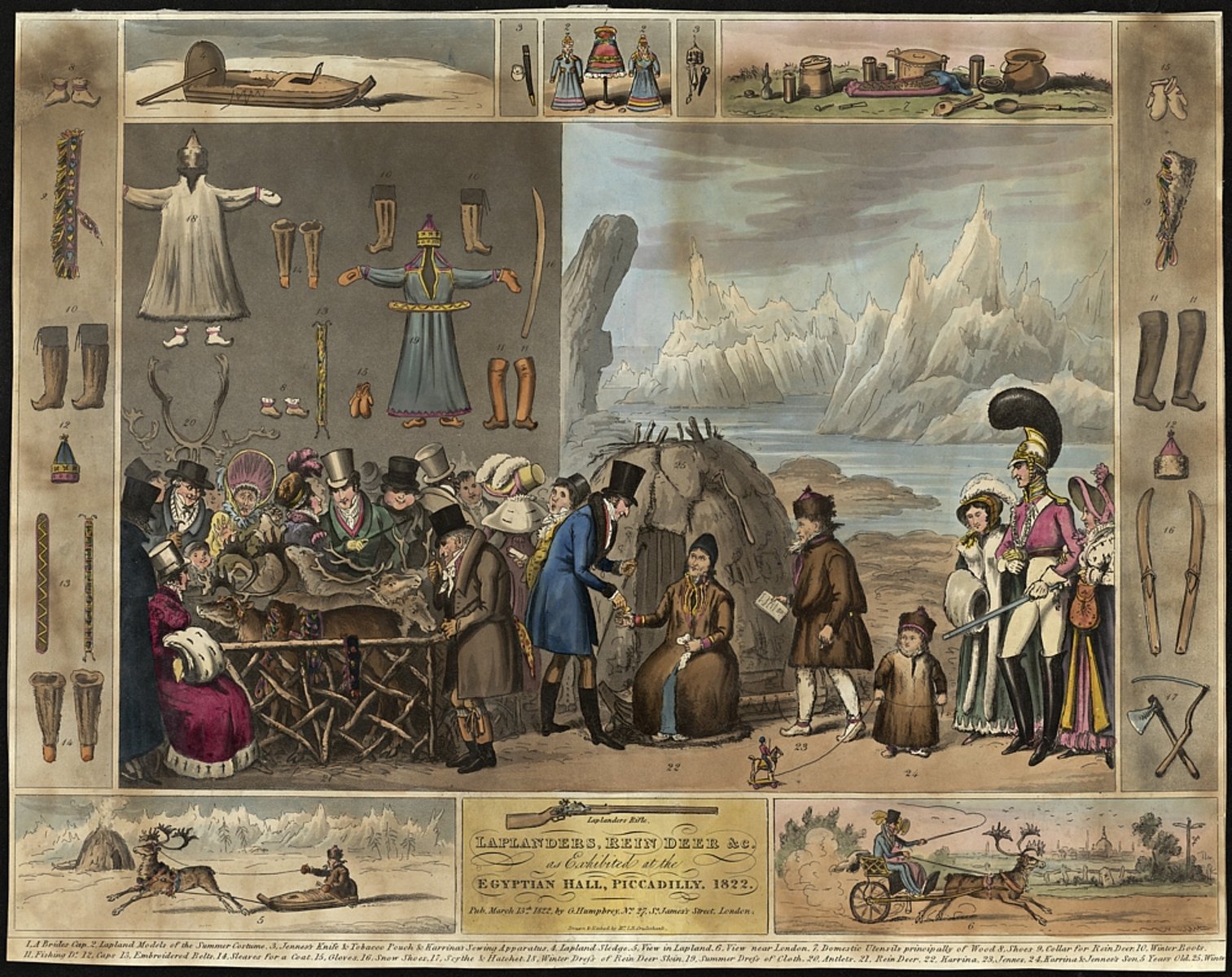
Showmanden William Bullocks udstilling af en norsk samerfamilie fra Rřros i London i 1822. Nasjonalbiblioteket Oslo. 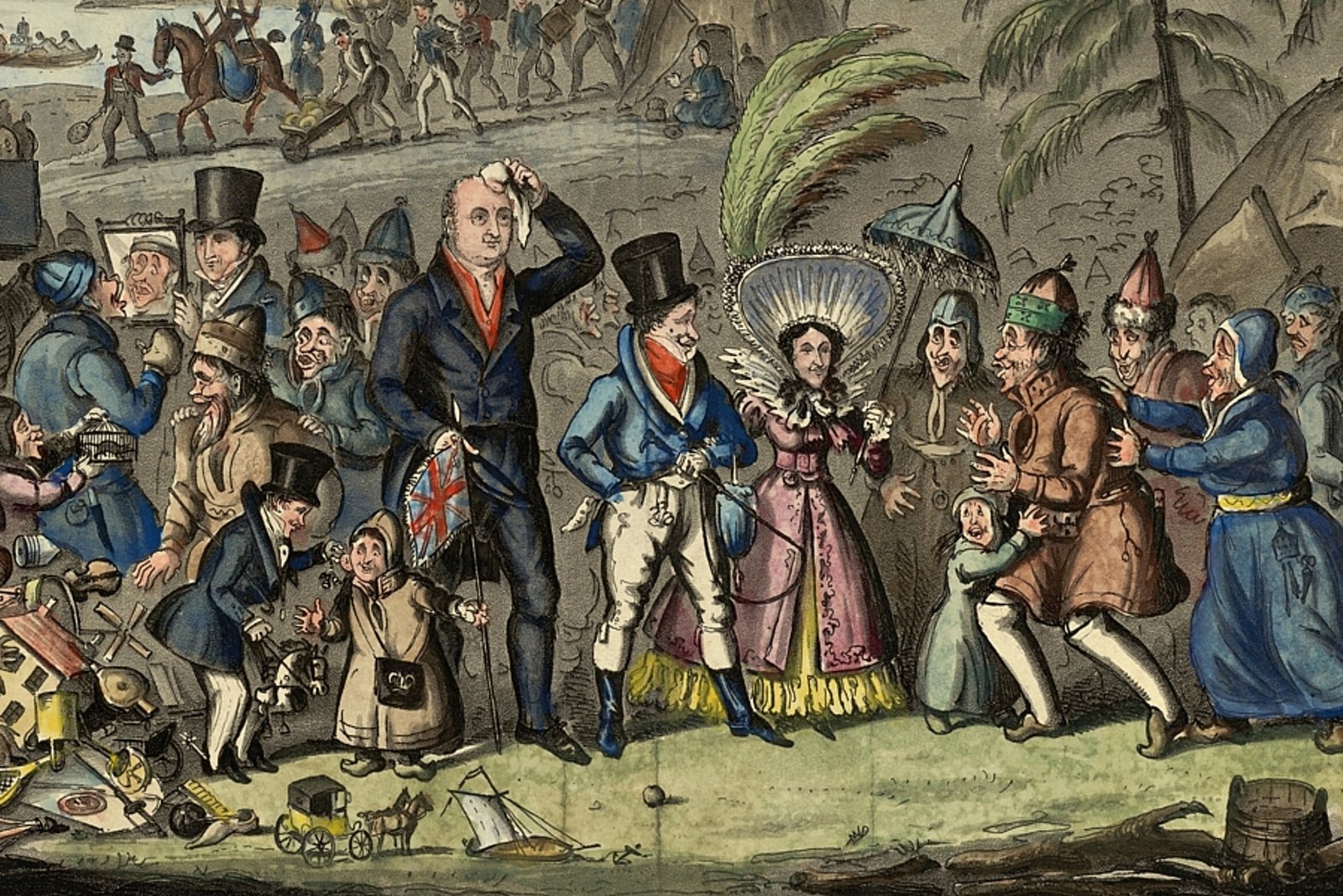
Det samiske ćgtepar Jen Thomassen Holm og Karen Christiansdatter vender hjem fra deres lykkelige tur til London i 1822, beriget af gaver fra deres udstiller og velynder William Bullock. Udsnit fra et samtidigt, engelsk tryk. Nasjonalbiblioteket Oslo.
Fremvisningerne af samer og deres rensdyr i Europas storbyer bar til at begynde med prćg af denne fascination. Dette var tilfćldet i 1830´ernes Křbenhavn. Ogsĺ i 1800-tallets slutning, da opvisninger af samer og rensdyr blev mere almindelige i circkusser og zoologiske haver, blev de aldrig en fuldbyrdet del af freak-showet og der herskede altid en vis mystik og respekt med hensyn til samerne, nĺr man viste dem frem som udstillingsobjekter. De blev fremstillet som naturbřrn og det var egentlig fřrst da den tyske zoo-magnat Carl Hagenbeck i 1870´erne begyndte at udstille lapper som antropologiske-zoologiske objekter, at den negative og racistiske holdning til samer tog til. Hagenbeck bragte samer fra deres hjemstavn til stenbroen i Europa, udstillede dem som »smĺ, uskřnne med smudsig gul hud, rundt hoved bevokset med stride, sorte hĺr, skrĺ řjne og en lille, flad nćse«. Ogsĺ videnskabsfolk, som prćgedes af nationalismen og racebiologiske teorier i anden halvdel af 1800-ĺrene, havde en stor trang til at distansere sig fra de "primitive" lapper. Sĺledes stod visse danske arkćologer som Worsaae og senere Sophus Müller, stejlt i holdningen om at forfćdrene til finnerne/lapperne ikke kunne have vćret Danmarks og Skandinaviens tidligste befolkning efter isalderen.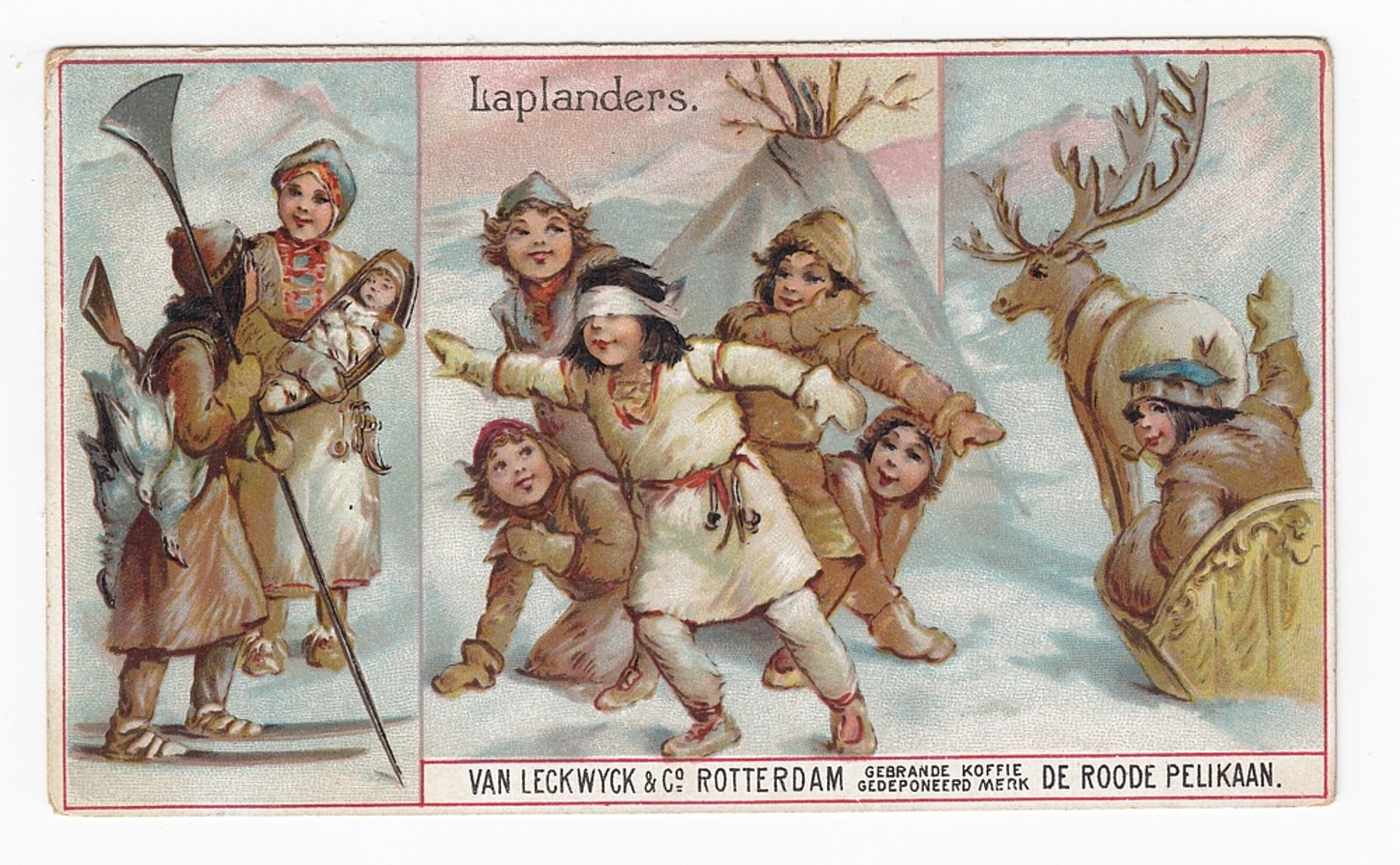
Samer fremstillet som břrn pĺ et kort som fulgte med i kaffepakker af mćrket Den Rřde Pelikan fra firmaet van Leckwyck i Rotterdam. Fra 1898. Fra forfatterens samling.
RENSDYRENE FĹR ET NYT HJEM I ISLAND
Fortćllingen om de skandinaviske rensdyrs rejsehistorie i det danske kongedřmme ville ikke vćre fuldendt uden en lille udstikker over havet. Omtrent et halvt ĺrhundred inden de 90 rendyr og de to samerpiger blev vist frem i Sankt Petersstrćde, havde man et helt et andet sted i kongeriget, hvor der heller ikke naturligt fandtes rensdyr, haft lyst til at anskaffe disse vidunderlige dyr. Der var tanken dog ikke at vise dem frem for offentligheden som et kuriosum. Pĺ Island pĺtćnkte man istedet import og avl af rensdyr, en tanke der var opstĺet allerede i slutningen af 1600-ĺrene. Rensdyrstransporter til Island blev dog fřrst realiseret efter en kongelig anordning i 1700-ĺrenes anden halvdel. De blev sejlet fra Finnmark til Island i ĺrene 1771-87 som en slags krisehjćlp til en befolkning hćrget af vulkanske udbrud og sult. Dyrene blev sat i land forskellige steder pĺ řen.
Alle de steder dyrene blev sat ud, med untagelse af det řstlige Island og det sydvestlige Island, uddřde de smĺ flokke rensdyr inden 1860. De fleste af rensdyrene bukkede under i de enorme vulkanudbrud i Laki-omrĺdet i 1783-85, hvis aske menes at vćre medvirkende til dĺrligere vejr og hřst i Europa i de fřlgende ĺr, og menes endda af nogle at vćre en af hovedfaktorerne til at den Franske revolution udspillede sig nogle ĺr senere. Udbruddene gik naturligvis ogsĺ hĺrdt udover fć og folk pĺ Island og truede en overgang med at affolke řen.
Vilde rensdyr i SV-Island. Litografi af A. Joly og Bayot pĺ grundlag af en tegning af Auguste Mayer fra 1838.
Et hold rener, bestĺende af 30 křer og 5 hanner, som blev skibet til handelsstedet Vopnafjörđur i Nordřstisland i 1787, overlevede turen til Island. Efterkommerne af den hjord vandrer endnu vilde rundt pĺ det islandske hřjland samt i de řstislandske fjorde. Nutidens omtrent 4000 dyr i Island, som nedstammer fra rentransporterne fra Finmark i slutningen af de 1700-tallet, udnyttes kun til reguleret jagt. Den udřves af mennesker, hvoraf enkelte helt sikkert er efterkommere efter rensdyrsjćgerne i Danmark for 14.000 ĺr siden og endog efter samer som ogsĺ kom med til Island da landet fřrst blev bosat i slutningen af 800-tallet.
/ Vilhjálmur Örn Vilhjálmsson ©
* Denne artikel var tiltćnkt tidsskriftet SKALK. Skalk gav det svar, efter nćsten to ĺrs ventetid fra artiklen blev indlveveret, at man ikke ville bringe den fordi man modtog sĺ mange artikler som omhandlede "nyere tid". I vores Korona-tider, hĺber jeg dette tilbageblik pĺ rensdyrenes historie glćder sjćle som er til den affejede "nyere tid".
Litteratur:
Baglo, Catharine (2017). Pĺ Ville Veger? Levende Utstillinger av Samer i Europa og Amerika. Orkana Akademisk, Stamsund: [Dette interessant vćrk nćvner alt der er vćrd at vide om Samer-interessen i 1800- og 1900-tallet, borset fra de tidlige forestillinger i Křbenhavn].
Kórónublogg 2020 | Breytt 6.10.2022 kl. 04:50 | Slóđ | Facebook | Athugasemdir (3)
Konum stillt upp viđ vegg
7.3.2020 | 10:50
Á ţessum síđustu og verstu veirutímum, ţegar fjölţjóđakenndin rýrnar óneitanlega heldur geyst eftir óyfirveguđ skítaferđalög lítilla mannvitsbrekka, er um ađ gera ađ fara í bröttustu brekkuna og hefja óbeislađ mansal og annan ósóma sem hćgt er ađ hella yfir ţjóđina hér á Moggablogginu. Viđ verđum nefnilega ađ vera samstíga um "fordervelsi" heimsins.
Fornleifur hefur nú fengiđ veirurnar margar og er nú líka kominn međ slćma bakteríu fyrir grćnlenskum konum og stúlkum. Áđur en Fornleifur verđur grýttur og settur í gapastokk tel ég réttara ađ afhjúpa ađ veikleiki Fornleifs er einvörđungu fyrir grćnlenskum konum sem hann kaupir, og helst fyrir slikk, ţar hann nćr í ţćr, stundum á netinu en annars á mörkuđum heimsins. Ţegar hann dregur ţćr í hús kastar hann ţeim upp á vegg og dáist ađ fegurđ ţeirra og glćsileika viđ ţá međferđ.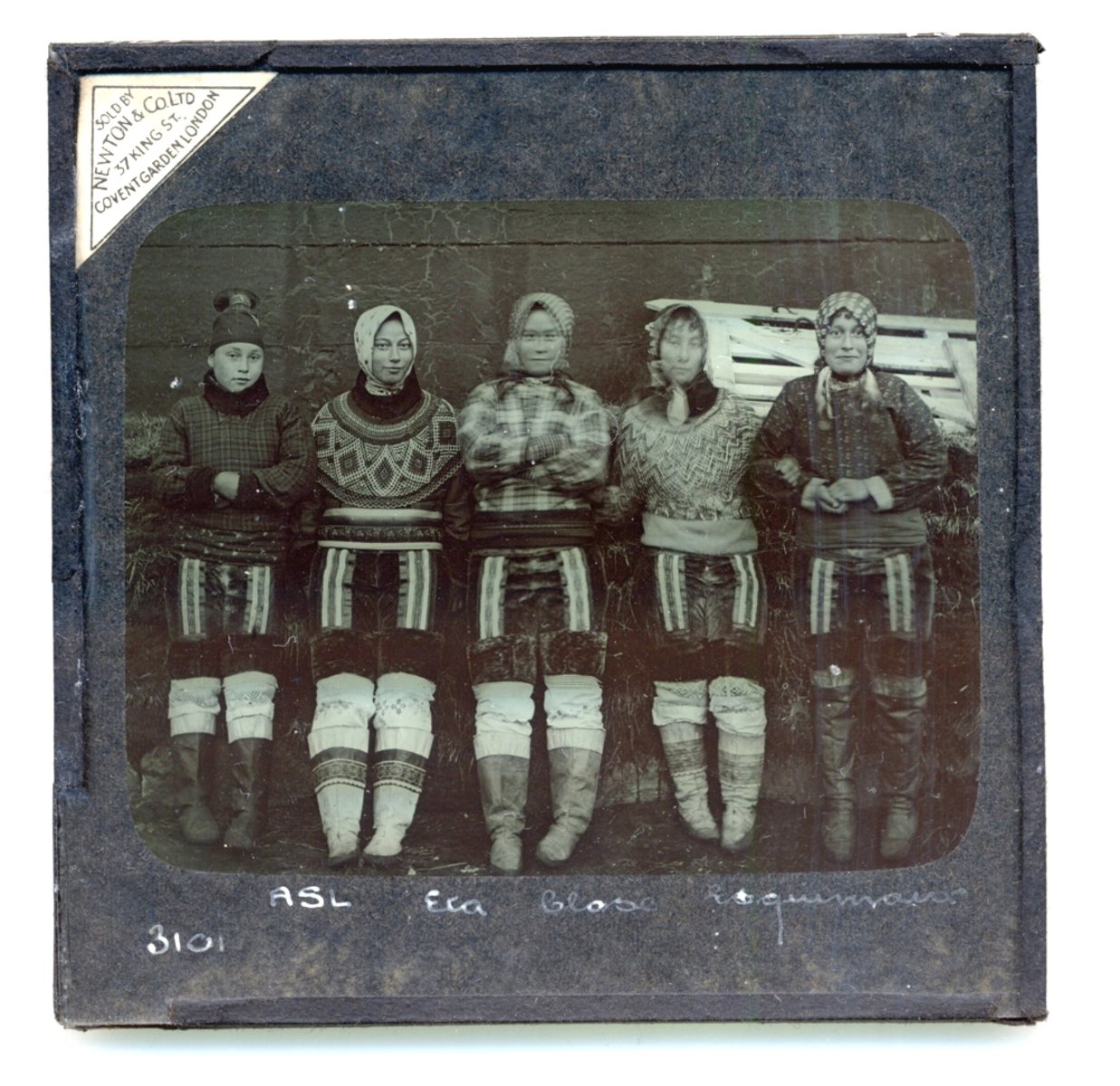 Ljósmyndin var seld sem Laterna Magica skyggna hjá fyrirtćkinu Newton og Co. Ltd. í Covent Garden í Lundúnum. Fyrirtćkiđ var ţar til húsa á tímabilinu 1912-25. Myndin er líklega frá ţví fyrir 1920. Frótt fólk á Grćnlandi og í Danmörku vinnur nú ađ ţví fyrir Fornleif ađ fá úr ţví skoriđ hvar myndin var tekin, en ţađ var vafalaust á Vestur-Grćnlandi. Ţví miđur hefur hvorki varđveist heil sería međ myndum frá Grćnlandi frá Newton & Co Ltd., né skrá yfir slíkar myndir.
Ljósmyndin var seld sem Laterna Magica skyggna hjá fyrirtćkinu Newton og Co. Ltd. í Covent Garden í Lundúnum. Fyrirtćkiđ var ţar til húsa á tímabilinu 1912-25. Myndin er líklega frá ţví fyrir 1920. Frótt fólk á Grćnlandi og í Danmörku vinnur nú ađ ţví fyrir Fornleif ađ fá úr ţví skoriđ hvar myndin var tekin, en ţađ var vafalaust á Vestur-Grćnlandi. Ţví miđur hefur hvorki varđveist heil sería međ myndum frá Grćnlandi frá Newton & Co Ltd., né skrá yfir slíkar myndir.
Víst má nú telja, ađ rennusteinsdómarar Raufarhafnar dćmi Fornleif sem Vínsteinsdóna og setji hann í göngugrind. Ţví langar mig ađ taka ţađ greinilega fram ađ ađeins er um kaup á ljósmyndum ađ rćđa af grćnlenskum konum, í alls konar stellingum, en kappklćddar. Eins og allir vita er Fornleifur međ sterk söfnunargen, en aftur á móti veika litninga gagnvart fegurđ kvenna hvers konar. Ţó safnar karlinn myndum af íslenskum karlmönnum frá 19. öld. Ţađ verđur ađ vera smá ljótleiki í veruleikanum.
Fornleifur hefur áđur greint frá grćnlenskum kvenpeningi í geymslum hans, sem eru í miklu uppáhaldi hjá honum. Sjá t.d. myndina og söguna af Sofie litlu í Upernavik hér.

Nú í miđri veiruplágu ţeirri sem Drottinn hefur lagt á herđar ţjóđanna, leyfđi Fornleifur sér ađ vera góđur viđ sjálfan sig og kaupa smá gott handa sjálfum sér á laugardegi. Hann keypti fimm grćnlenskar stúlkur á fćti. Ţurfti ekki einu sinn ađ sótthreinsa ţćr. Hann kenndi svo í brjósti um ţćr ţar sem ţćr höfđu orđiđ ómóđins og afvegalagđar einhvers stađar á Englandi á fyrri hluta 20. aldar, jafnvel rétt eftir spćnsku veikina. Nú eru ţessar fimm konur komnar í bás hjá Fornleifi. Hann strýkur ţeim mjög en kastar ţeim annađ slagiđ á vegginn.
En ţar sem karlinn er dóni eins og allir kallar - og dónar eiga ţađ til ađ vilja deila gleđi sinni međ öđrum, ákvađ Fornleifur, eftir mörg varnađarorđ og fjölmörg ammen frá mér ritstjóranum, ađ bregđa konunum fimm upp á vegginn hér í von um ađ ţađ veitti gleđi í miđju kórónafaraldrinu. Lekur nú neftóbakiđ úr nösum sumra smekkmanna, ćtla ég.
Gamlar myndir og fróđleikur | Breytt s.d. kl. 12:19 | Slóđ | Facebook | Athugasemdir (3)
Madames et Monsieurs
22.2.2020 | 07:53
Fornleifur og frú eru búin ađ vera á Paris í tvo daga og upplifa margt merkilegt. Í gćr var m.a. fariđ á Musee de l´Homme. Ţađan er útsýniđ ađ Eiffelturninu einna best í heiminum. Voriđ er ađ skella á í París og veđriđ var fallegt miđađ viđ fyrsta daginn, ţegar ţar var stinningskaldi og hálfíslenzkt sumarveđur.
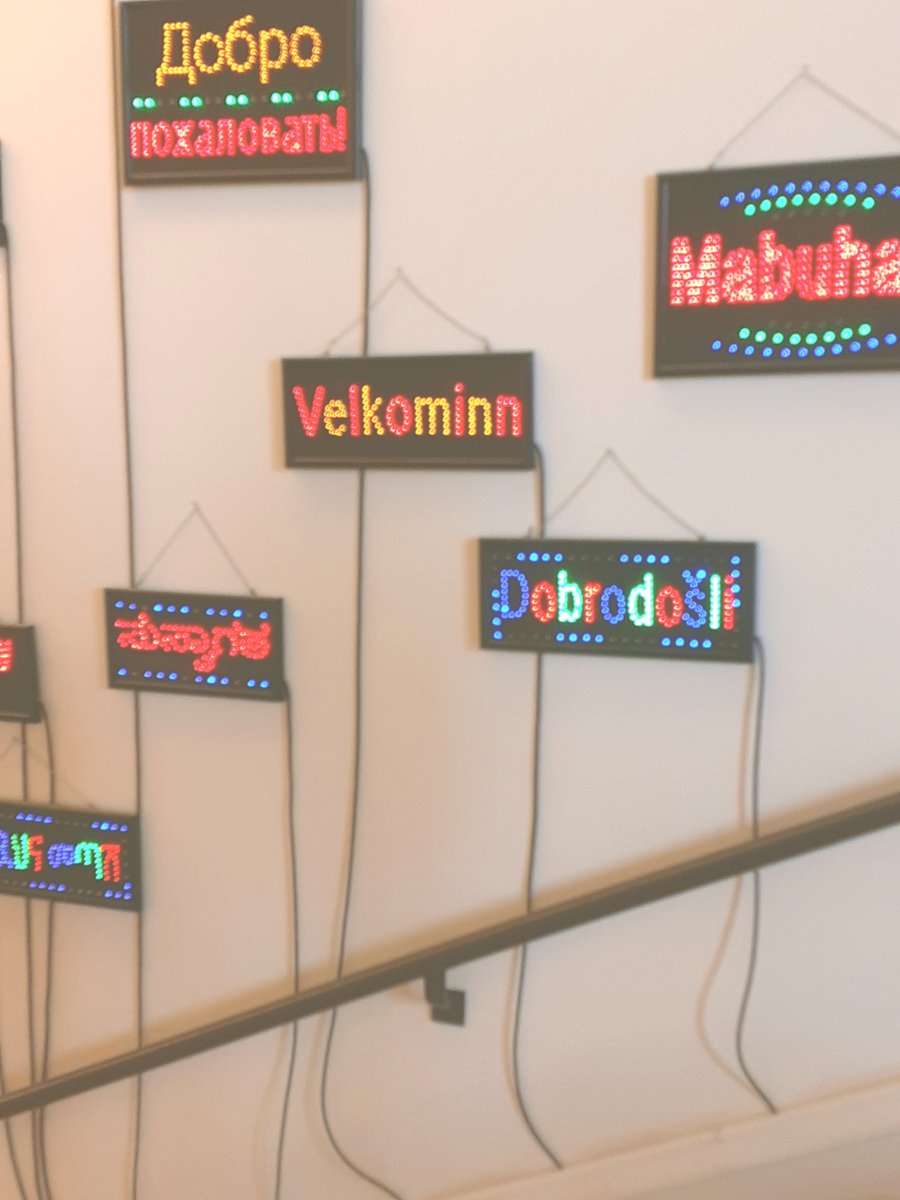
Á Mannkynssafninu var ágćt sýning, nýleg, sem ekki kom ţó mikiđ á óvart ţar sem ég var búin ađ lesa töluvert um hana. Ţađ sem Fornleifi ţótti mest bitastćtt var, ađ gestir voru bođnir velkomnir á fjölda tungumála á leiđ sinni upp miklar tröppur sem leiđa fólk upp á 2. hćđ ţar sem sýningin um ţróun mannsins hefst. Mađurinn hefur ţó ekki ţróast meira en svo í París ađ safniđ sem segir sögu mannsins, virđist hanga dulítiđ í gamalli kynjastefnu 19. aldar. Ţannig eru Íslendingar ekki bođnir velkomnir í fleirtölu, Velkomin, heldur í eintölu karlkyns, Velkominn. Fornleifur mun fljótlega skrifa Macron og biđja hann um ađ leiđrétta ţetta ţegar konan hans leyfir.Auđvitađ voru fleiri Íslendingar á sýningunni, en á Musee de l´Homme hitti ég Bjarna rektor Jónsson, sem Fornleifur hefur í mörg ár ćtlađ sér ađ mćla sér mót viđ í París. Bjarna hef ég ritađ um áđur hér og hér.
Bjarni Jónsson á sýningu í París 1856-57. Skannađ hefur Vilhjálmur Örn Vilhjálmsson.
Á nýju sýningu Mannkynssafns er Bjarni rektor kominn á góđan stađ í ţróunarsögu mannkyns, og sýnir ţađ hvítt á svörtu.
Bjarni er líkast til hvítasta dćmi mannkyns á allri sýningunni, ţví hvergi er minnst á albínóa. Ekki er ég viss um ađ Jón heitinn Valur og ađrir hvítingjar hefđi sćtt sig viđ örlög Bjarna rektors, en ţarna er hann einfaldlega í allri sinni dýrđ og ekkert er viđ ţví ađ gera - nema ađ einhver klagi í Macron.
Mission Vigipirade
Ţegar viđ komum út úr safninu eftir tvćr og hálfa klukkustund, sáum viđ ekkert meira né minna sýnikennslu á hryđjuverkavörnum Frakka. 15 vígreifir hermenn hörfuđu skipulega ađ ţremur litlum og ómerkilegum Renault bílum í eigu hersins eftir ađ hafa "sýnt sig" á Place du Trocadéro gegnt Eiffelturni. Hermennirnir voru fyrir utan árásarriffla vopnađi Baskahúfum í hlćgilegri yfirstćrđ. Almennilegir terroristar hefđu fljótt gert ţessa dáta óvirka međ ţví einu ađ slá pottlokiđ af ţeim. Á sýningunni í Mannkynssafninu var einmitt sýnt hvernig höfuđstćrđ, höfuđskraut og jafnvel yfirvarskegg á stćrđ viđ frímerki gat aukiđ virđinu manna og annarra apa fyrr á tímum. Heil menningarţjóđ í námunda viđ Frakka féll fyrir slíkri hormottu.
Svo var spásserađ yfir Signu í austurátt og ađ loku tekin Metro ađ Montmartre ţar Fornleifur hefur hreiđrađ um sig bak viđ Sacre Coeur kirkju, (sem ég sagđi frá um daginn), í miklum vellystingum.
Ritstjóri Fornleifs er alls stađar tekinn sem ekta Fransí biskví ţótt ađ hann sé ekki ađ Austan (Árnessýslu) eins og Ţorsteinn Pálsson hélt fram ađ ég vćri viđ eitthvađ pakk í Kaupmannahöfn. Fólk hér hefur hörkuviđrćđur viđ mig á tungumáli sínu, t.d. á frábćru veitingahúsi nćrri Place du Bastille í París, ţar sem ég hitti gamla kollegu og eiginmann hennar sem er embćttismađur hjá UNESCO.
Au revoir mis ames.
Bjarni hefur áđur veriđ sýndur á sýningu Ólafar Nordal listamanns.
Menning og listir | Breytt 25.11.2023 kl. 16:06 | Slóđ | Facebook | Athugasemdir (0)
Heilagi mađurinn í Jerúsalem (1880)
19.2.2020 | 12:30
 Nú ţegar hinir örfáu gyđingar Íslands hafa fengiđ lögmáliđ á rúllu (Tóru) sem ţeir dönsuđu međ um götur Reykjavík sl. sunnudag, langar langar mig ađ birta mynd sem ég á. Hún sýnir rabbína í Jerúsalem. Ég átti víst yngri mynd af ţessum manni eldri. Rabbíninn sat einnig fyrir um aldamótin 1900 í Jerúsalem, og ţar bjó hann líka (sjá hér). Nafn hans er ekki ţekkt, en hann er ţekktur af öđrum ljósmyndum og hafđi ţví greinilega ekkert á móti illu auga myndavélarinnar.
Nú ţegar hinir örfáu gyđingar Íslands hafa fengiđ lögmáliđ á rúllu (Tóru) sem ţeir dönsuđu međ um götur Reykjavík sl. sunnudag, langar langar mig ađ birta mynd sem ég á. Hún sýnir rabbína í Jerúsalem. Ég átti víst yngri mynd af ţessum manni eldri. Rabbíninn sat einnig fyrir um aldamótin 1900 í Jerúsalem, og ţar bjó hann líka (sjá hér). Nafn hans er ekki ţekkt, en hann er ţekktur af öđrum ljósmyndum og hafđi ţví greinilega ekkert á móti illu auga myndavélarinnar.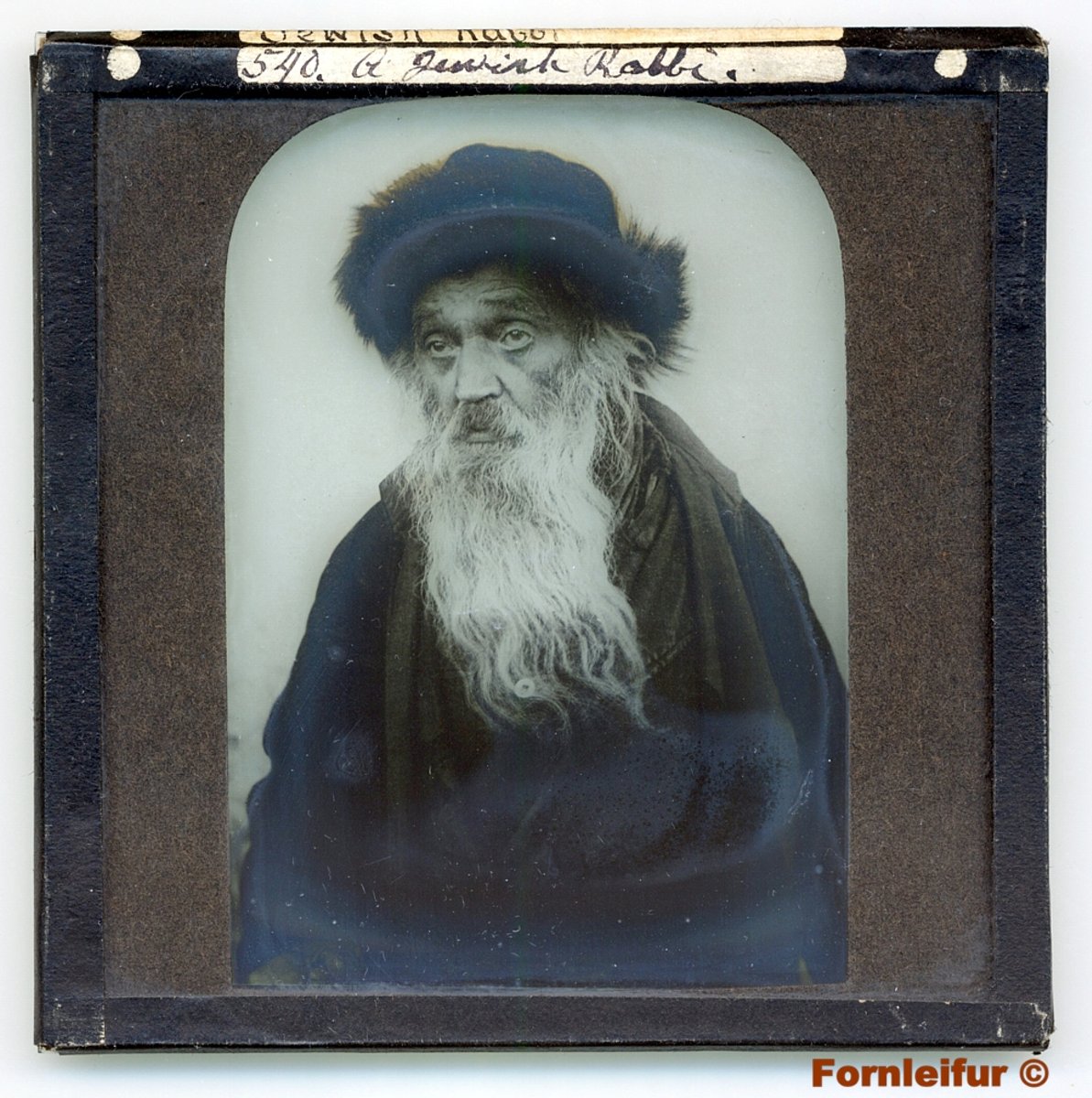 Fornleifssafn náđi í rabbínann hjá skransala í Alexandríu í Egyptalandi. Heitir sá ágćti mađur Ashraf Abdelfattah.
Fornleifssafn náđi í rabbínann hjá skransala í Alexandríu í Egyptalandi. Heitir sá ágćti mađur Ashraf Abdelfattah.
Ţetta virđist vera sami mađurinn á myndunum báđum. Nýja ljósmyndin er einnig Laterna Magica skyggna, en er mjög vandlega handlituđ og alldólglega retúseruđ. Hún er 20 árum eldri en fyrrgreind ljósmynd.
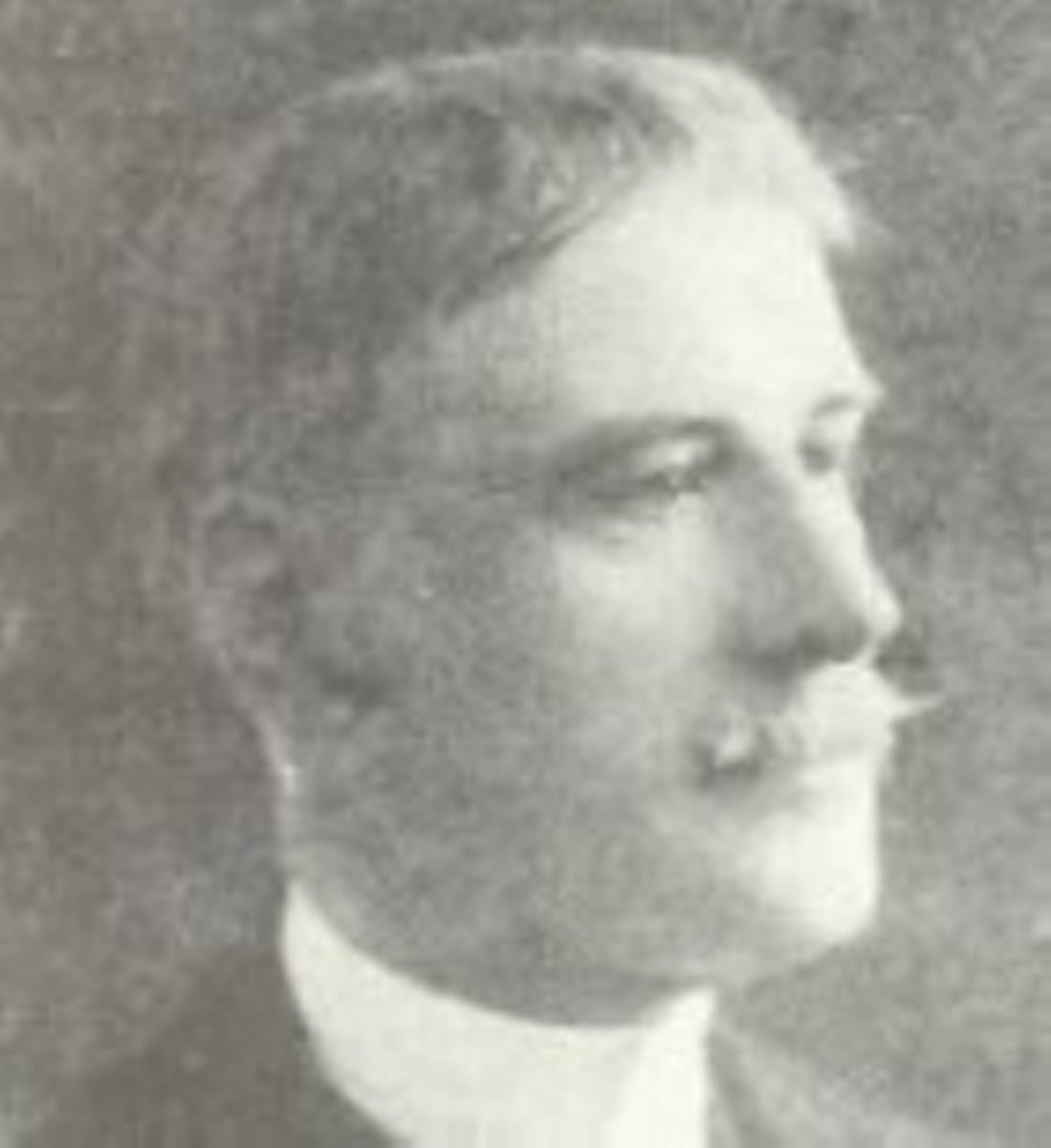 William Charles Hughes hét gleraugnasali og framleiđandi Lagerna Magica sýningatćkja, sem í aukastarfi framleiddi seldi Laterna Magica skyggnur. Á myndinni stendur ađ hún sé gefin út í seríu sem kallađist The Holy Land, ţegar fyrirtćki W.C. Hughes var til húsa á 151 Hoxton St. London N., en ţar var fyrirtćkiđ til húsa frá 1879-1882 (sjá hér). Ljósmyndin af rabbínanum er ţví ađ minnsta kosti 140 ára gömul.
William Charles Hughes hét gleraugnasali og framleiđandi Lagerna Magica sýningatćkja, sem í aukastarfi framleiddi seldi Laterna Magica skyggnur. Á myndinni stendur ađ hún sé gefin út í seríu sem kallađist The Holy Land, ţegar fyrirtćki W.C. Hughes var til húsa á 151 Hoxton St. London N., en ţar var fyrirtćkiđ til húsa frá 1879-1882 (sjá hér). Ljósmyndin af rabbínanum er ţví ađ minnsta kosti 140 ára gömul.
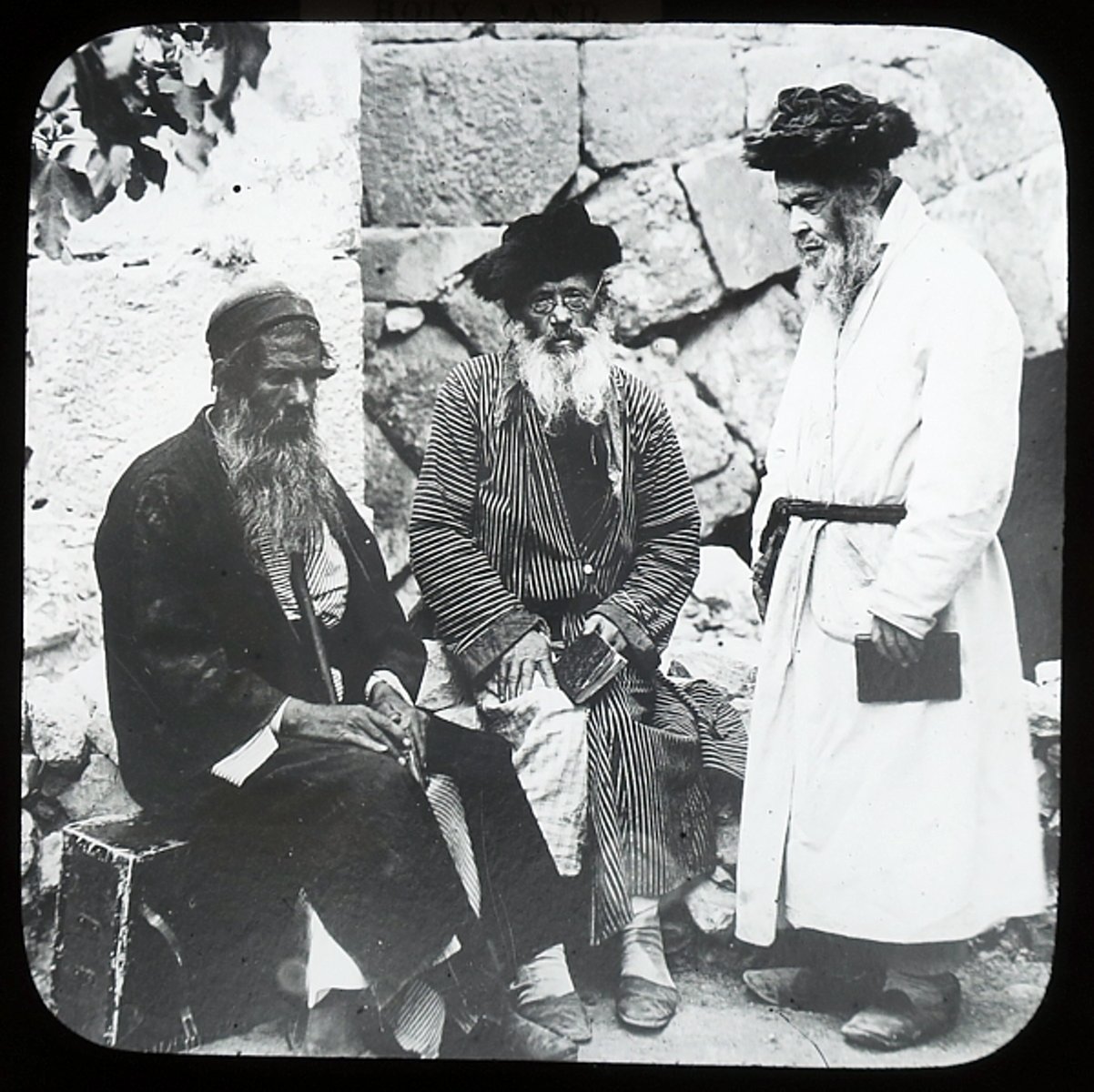
Fornleifssafn á ađra ljósmynd sem sýnir ţrjá rabbína sem sátu fyrir í Jerúsalem á 10. áratug 19. aldar. Ţeir voru greinilega ekki eins ólmir í myndatökur og starfsfélagi ţeirra.
Ţetta voru fátćkir menn og hálfumkomulausir í borg sem var stjórnađ af Tyrkjum, ţar sem yfirstéttin voru arabískir kaupmenn frá ýmsum löndum (síđar kallađir Palestínumenn međ hirđingjum og bćndum landsins og fjölmörgum innflytjendum frá Egyptalandi).
Ljósmyndafornleifafrćđi | Slóđ | Facebook | Athugasemdir (0)
Paris, Paris - J´arrive
17.2.2020 | 10:07
Bráđlega dvel ég í París, ţar sem ég hef ekki sett mínar stóru bífur síđan 1971, er ég var ţar á ferđ međ foreldrum mínum, sem tóku međ mig í Evrópureisu.
Reyndar hef ég veriđ annars stađar í Frakklandi, en hrćđslan viđ vankunnáttu mína í frönsku er líklegast meginástćđan fyrir ţví ađ Frakkland hefur orđiđ útundan á Evrópureisum mínum.
Ég á mjög góđar minningar frá ferđinni áriđ 1971, sem ég hef lýst áđur, og ţegar ég var á Íslandi í janúar sl. tók ég mynd af málverki sem ég málađi um 1972/73, eftir minni og svarthvítri Kodak Instamatik ljósmynd úr Parísarferđinni. Ţetta var nú ekki međal minna bestu verka, hálfgerđ kremkaka.
Nú mun ég sjá Sacre Coeur kirkjuna á Montmartre aftur, ţví ég mun búa ca. 100 metra frá kirkjunni. Ég tek ţó hvorki liti né pensla međ og lćt mér nćgja ljósmyndir.
Ţannig var ritstjóri Fornleifs teiknađur af spćnskum listamanni, hálfgerđum nautabana, á Place de Tertre á Montmartre.
Erindi mitt í París er ekki bara frí, gaman og kirkjumyndataka, heldur ţátttaka í ráđstefnu um bréfaskriftir fórnalamba helfararinnar á Memorial de la Shoah. Ég hef lengi veriđ međ í bígerđ bók međ bréfum heillar fjölskyldu sem útrýmt var. Segiđ frá ţví síđar, en sýni ykkur hér eitt bréfa ţeirra af u.ţ.b. 110 sem í bókinni verđa birt og rćdd.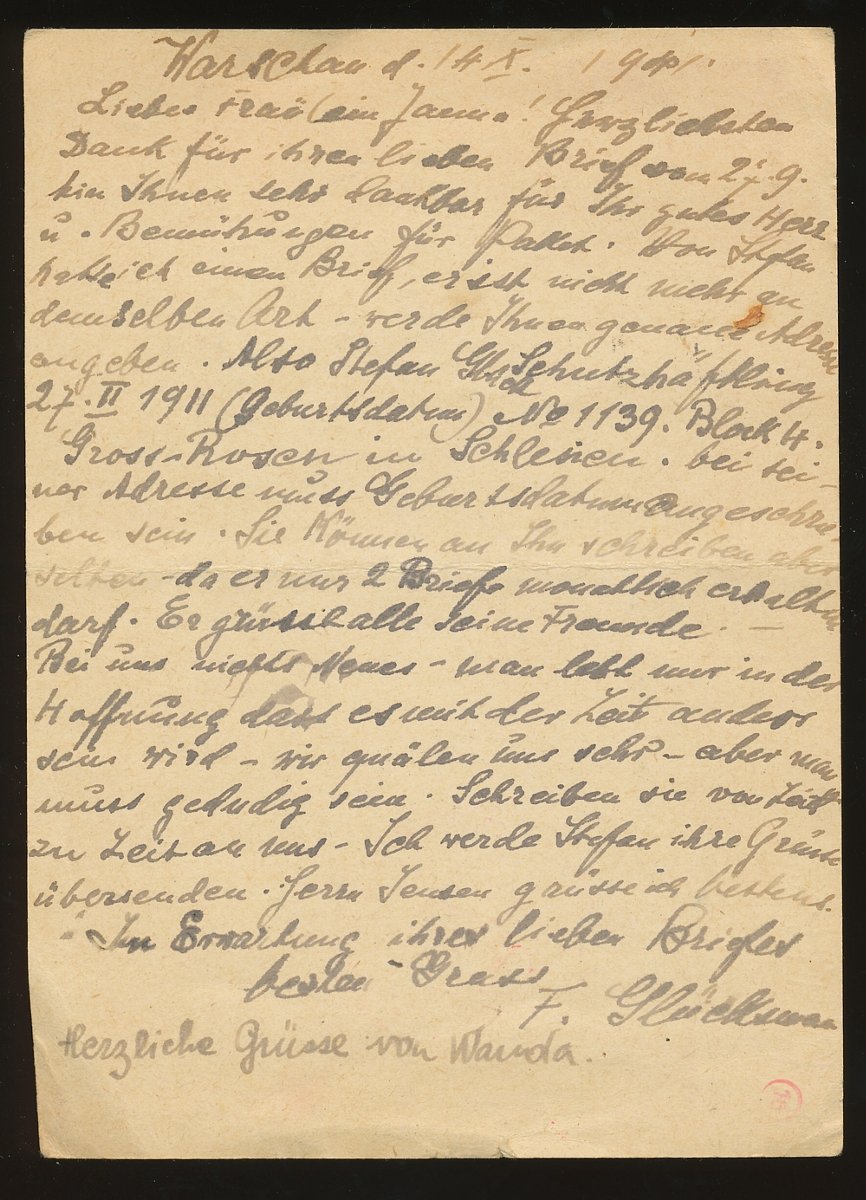
Bloggar | Slóđ | Facebook | Athugasemdir (3)
Mjöll komin á áttrćđisaldurinn
12.2.2020 | 10:42
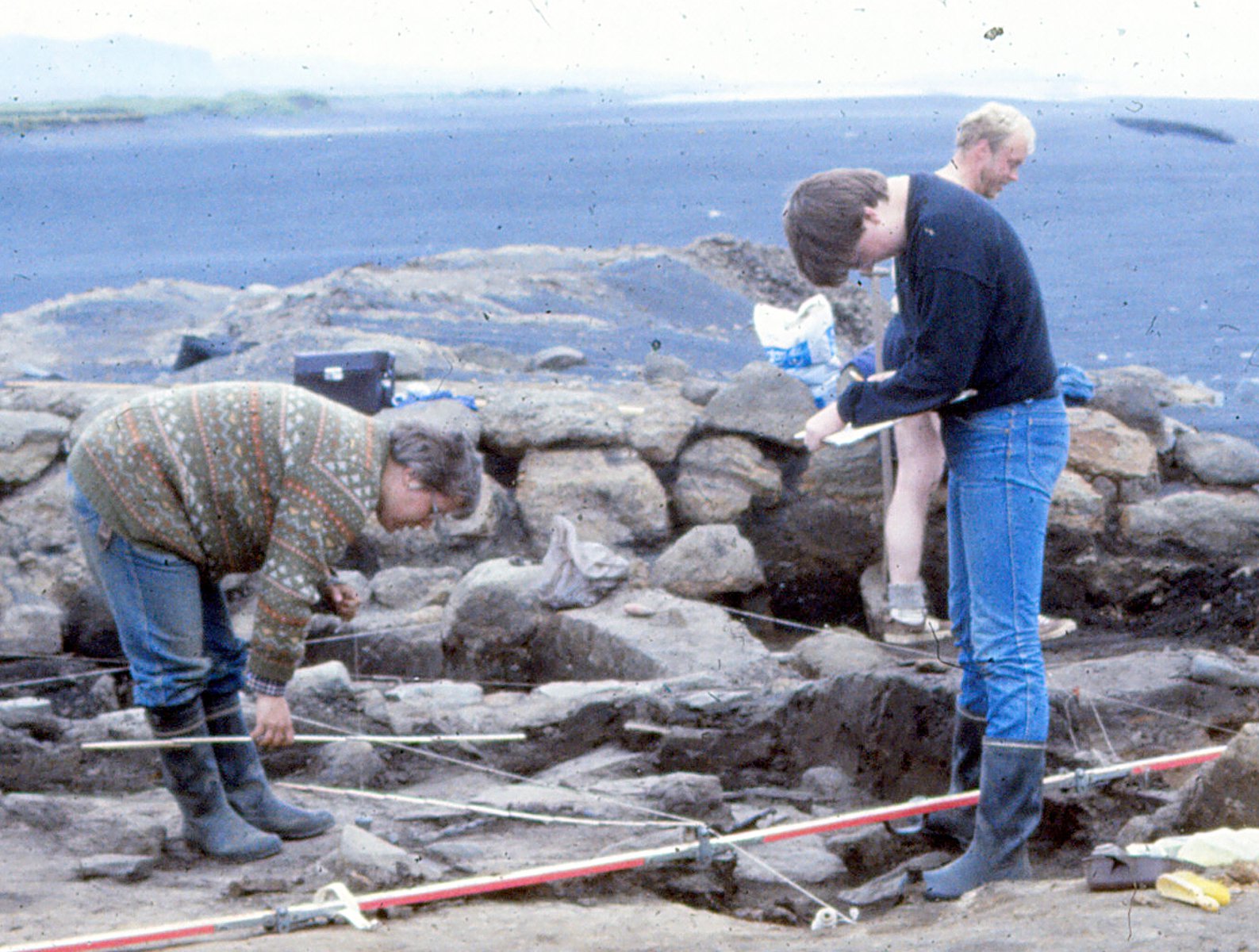
 Frú Mjöll Snćsdóttir, fil.kand., hér í bć (ef ţiđ eruđ í Reykjavík) er sjötug í dag. Ţetta gerist fyrr eđa síđar fyrir flesta. Ég naut ţess árin 1981 og 1982 ađ fá ađ vinna stund úr sumrum hjá gömlu pervertunni á Hólnum (Stóru-Borg). Allir vita ađ enginn varđ samur mađur eftir ađ hafa reynt hólinn.
Frú Mjöll Snćsdóttir, fil.kand., hér í bć (ef ţiđ eruđ í Reykjavík) er sjötug í dag. Ţetta gerist fyrr eđa síđar fyrir flesta. Ég naut ţess árin 1981 og 1982 ađ fá ađ vinna stund úr sumrum hjá gömlu pervertunni á Hólnum (Stóru-Borg). Allir vita ađ enginn varđ samur mađur eftir ađ hafa reynt hólinn.
Í ţá tíđ var vandfengiđ ađ komast í uppgröft fyrir unga stúdenta í fornleifafrćđi. Kristján Eldjárn fann fyrir mig pláss hjá Mjöll. Er eg henni ćvinlega ţakklátur fyrir vistina.
Ţetta ljóta viđurnefni, gamla pervertan, sem ţiđ hnutuđ líklega um í fyrstu málsgreininni, fann ég ekki upp. Ţađ kom til af ţví ađ Mjöll var hafsjór af ţjóđlegum bröndurum, dónalegum. Ţá reitti hún af sér í nestistjaldinu á Stóru-Borg. Ţađ veitti ţreyttum vinnudýrum hennar mikla ánćgju og andlega upplyftingu. Ađ loknum brandara, héldu sumir vart vatni og ađrir hneggjuđu út á sandinn. Ţá flaug ţetta viđurnefni eitt sinn út úr velhressum kvenstúdent og hélst lengi síđan.
Ég hef skrifađ örlítiđ um ćvintýrin á Stóru-Borg hér á Fornleifi (Sjá hér, hér, hér og hér), en bíđ enn eftir stóru verki frá Mjöll um vinnu okkar margra á hólnum góđa.
Til hamingju međ sjötugsammćliđ Mjöll. Lifđu heil.
Myndin efst sýnir Orra Vésteinsson sagnfrćđing, sem úr mútum kominn gerđist fornleifafrćđiprófessor, og Mjöll ađ mćla eitt af mörgum gólfum á Stóru-Borg; en á bak viđ ţau gengur léttklćddur mađur og hlćr af einum af dónalegheitunum úr tjaldinu. Mér sýnist ađ lóa fljúgi yfir honum ... nei ţetta er ryk sćllra minninga.
Bloggar | Breytt s.d. kl. 12:18 | Slóđ | Facebook | Athugasemdir (4)
Ónafngreindur lundi í póstkassanum
4.2.2020 | 08:15
Fornleifur fćr ekki oft póstkort frá framandi löndum, nema frá einstaka gamlingja á ferđalagi. Honum brá ţví mjög í brún ţegar hann opnađi póstkassann í gćr. Ţar lá aldrei ţessu vant enginn reikningur, en hins vegar póstkort međ mynd ţessum fína lunda á syllu.
Lundinn hafđi veriđ sendur 27. janúar frá Íslandi og ţví flöktađ um í póstkerfinu í heila viku, sem ţykir nú orđiđ bara nokkur góđur tími.
Mér ţótti strax furđulegt ađ lesa ţađ sem á kortinu stóđ. Sendandinn hafđi ekki skrifađ neitt á kortiđ, heldur prentađ skilabođ sín og nafn og heimilisfang mitt í prentara, klippt ţađ út og límt á kortiđ.
Lundinn er líka dývítis dóni, ţví skilabođin voru heldur ekki undirrituđ. Ţau á ţessa leiđ:
Áhugaverđ lesning bíđur ţín á:
https://skemman.is/handle/1946/23442
Góđa skemmtun
Venjulega opna ég hlekki sem nafnleysingjar og tröll eru ađ ota ađ mér, en ţar sem ég veit hvađ skemman.is er, ćtlađi forvitnin nćstum ţví ađ drepa mig. Ég opnađi hlekkinn, sem ekki týndist í póstkerfinu, og ţar kom fram meistararitgerđ Margrétar Hallgrímsdóttur ţjóđminjavarđar viđ félagsvísindadeild HÍ, sem ber heitiđ Ţjóđminjasafn Íslands. Ţćttir úr stofnanasögu (2016).
Einhvern tíma áđur hef ég opnađ ţessa ritgerđ og kíkti ţá meira í hana en ég las. Ég man ađ mér ţótti ţetta frekar ţunnur ţrettándi fyrir mastersritgerđ og hugsađi međ mér ađ kannski hefđi bréfum fćkkađ í bréfasafni Ţjóđminjasafns frá ţeim tíma ađ ég vann ţar.
Ég kíkti aftur í gćr í ritgerđ ţessa. Ţađ er tóm tímaeyđsla eins og blogg ţetta, og skemmti ég mér ekki yfir ritgerđinni frekar en fyrri daginn. Mér finnst skautađ hratt yfir sum vandamálatímabil Ţjóđminjasafnsins.
Mér ţykir enn furđulegt ađ forstöđumađur ríkisstofnunar, sem í öđrum löndum yrđi ađ hafa doktorsmenntun, skrifi meistararitgerđ um stofnun sína og sögu hennar í starfi. Ţađ er eiginlega ţađ sama og ađ viđurkenna, ađ yfirmađurinn hafi ekki veriđ meistari á stofnun sinni, áđur en hann skrifađi ritgerđ viđ Háskóla Ísland. Eins ţykir mér međ ólíkindum ađ menn hafi tíma til ađ skrifa slíka ritgerđ, ţegar ţeir stjórna einni ađ helstu menningastofnunum landsins. Slíkt er örugglega á Íslandi taliđ til hćfileika, ţegar kona á í hlut - og ég viđurkenni fúslega ađ konur eru til flestra verka hćfari en karlar. Mig grunar aftur á móti, ađ ef karlrćfilstuska hefđi gert ţađ sama, hefđi hann veriđ rekinn međ smán fyrir ađ hafa veriđ í námi í vinnutíma - og ekki er Háskóli Íslands neinn kvöldskóli - eđur hvađ?
Lundi minn góđur, sparađu póstkortin og frímerkin. Saga Ţjóđminjasafnsins hefur enn ekki veriđ rituđ ađ viti. En ţađ er ţó harla fyndiđ ađ sjá lundarfar sumra manna ađ ţeir telja ţađ köllun sína ađ skrifa sögu embćtta sinna, ţegar ţeir sitja enn á embćttisstóli og allt leikur í lundi ţegar ekki er veriđ ađ reka starfsmenn og líka á öđrum stofnunum. Ţađ minnir mann einna helst á keisara í Róm. Tilfallandi lundapysjur og gamlir fornleifafrćđingar eiga vitaskuld erfitt međ ađ skilja slíkar prímadonnur. Viđ eru svoddan einfeldningar. Fornleifur las ţó hér áđur fyrr einhverja latínu međ litlum skilningi og kann ţví ađ sjá í gegnum áróđursrit manna fyrir sjálfa sig.
En hvernig ţađ er hćgt ađ framleiđa slíkt í HÍ um hábjartan dag og verđa meistari fyrir, er ofar mínum skilningi. En meiri af tíma mínum eyđi ég ekki í slíkar vangaveltur. Flest á hinu háa Íslandi er ofar mínum skilningi hvort sem er. Góđar stundir.
Er óreiđa í Skemmunni?
Nokkrum mínútum eftir ađ ég birti ofanstćđa frásögn af óundirrituđu póstkorti, ćtlađi ég ađ sjá hvort allt virkađi á blogginu. Ţá sá ég ađ ritgerđin eftir ţjóđminjavörđ var ekki lengur ađgengileg á Skemman.is. Ţađ er búiđ ađ loka fyrir gegnsćiđ sem var ţar í gćr.
Viđbót viđ viđbótina einni og hálfri klukkustund frá birtingu ţessa blogs. Sviđsstjóri ţjónustu og miđlunar á Landsbókasafni upplýsir:
Í gćr var afgreitt erindi frá höfundi ritgerđarinnar sem vildi láta loka ađgangi ađ henni.
Ţađ var svar viđ erindi mínu til skemman.is, sem sent var kl. 9:17 ađ íslenskum tíma í dag 4. febrúar 2020:
Í gćr opnađi ég og las í ritgerđ á Skemmunni sem hćgt var ađ finna hér:
https://skemman.is/handle/1946/23442
Í dag er búiđ ađ loka á lestur.
Mér leikur forvitni á ţví ađ vita hvađ veldur ţessu breytta ástandi á milli daga.
Líklegt tel eg ađ fleiri lundar hafi veriđ á ferđinni međ póstţjónustunni.
Ţjóđminjasafn Íslands | Breytt s.d. kl. 10:26 | Slóđ | Facebook | Athugasemdir (0)


